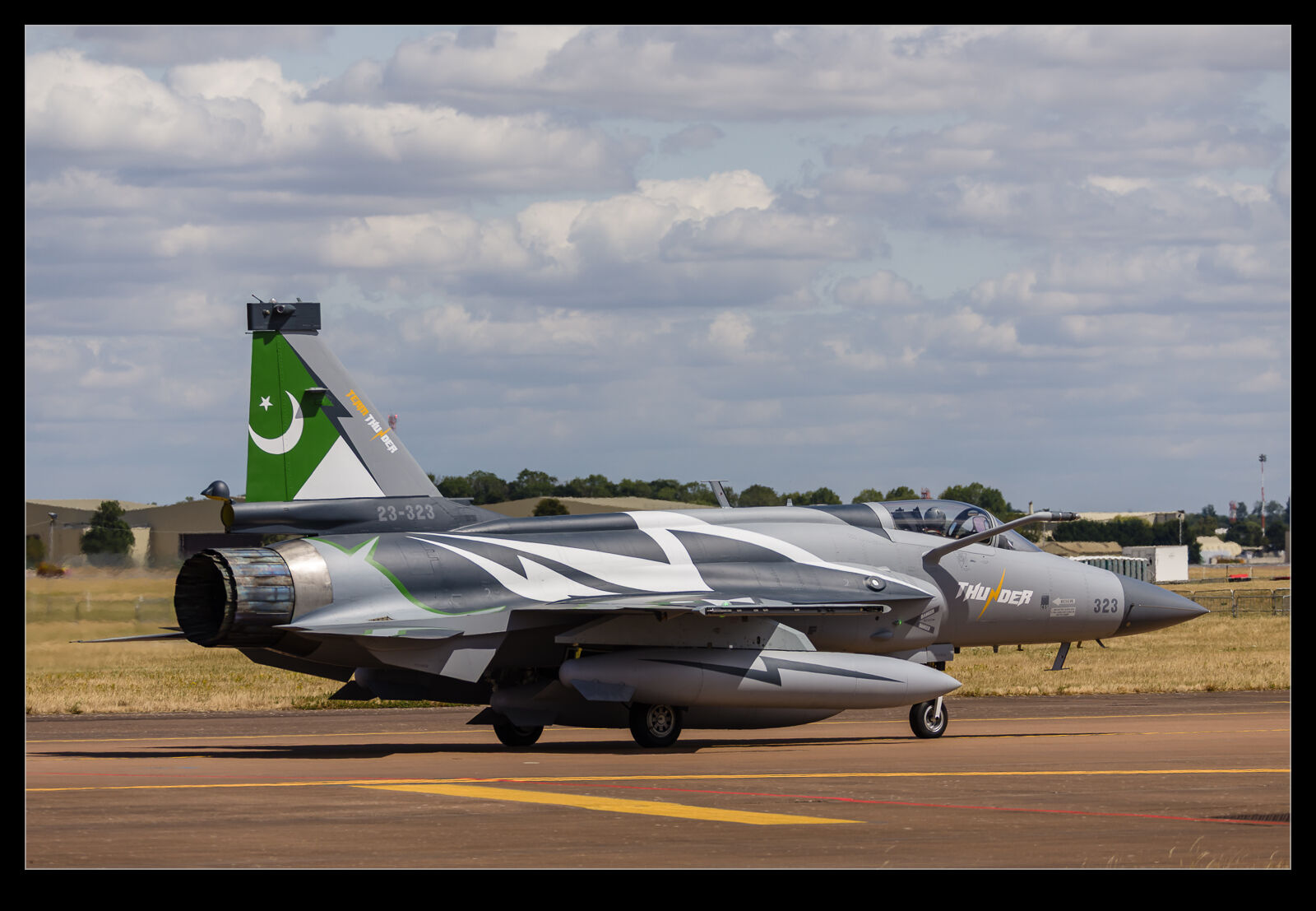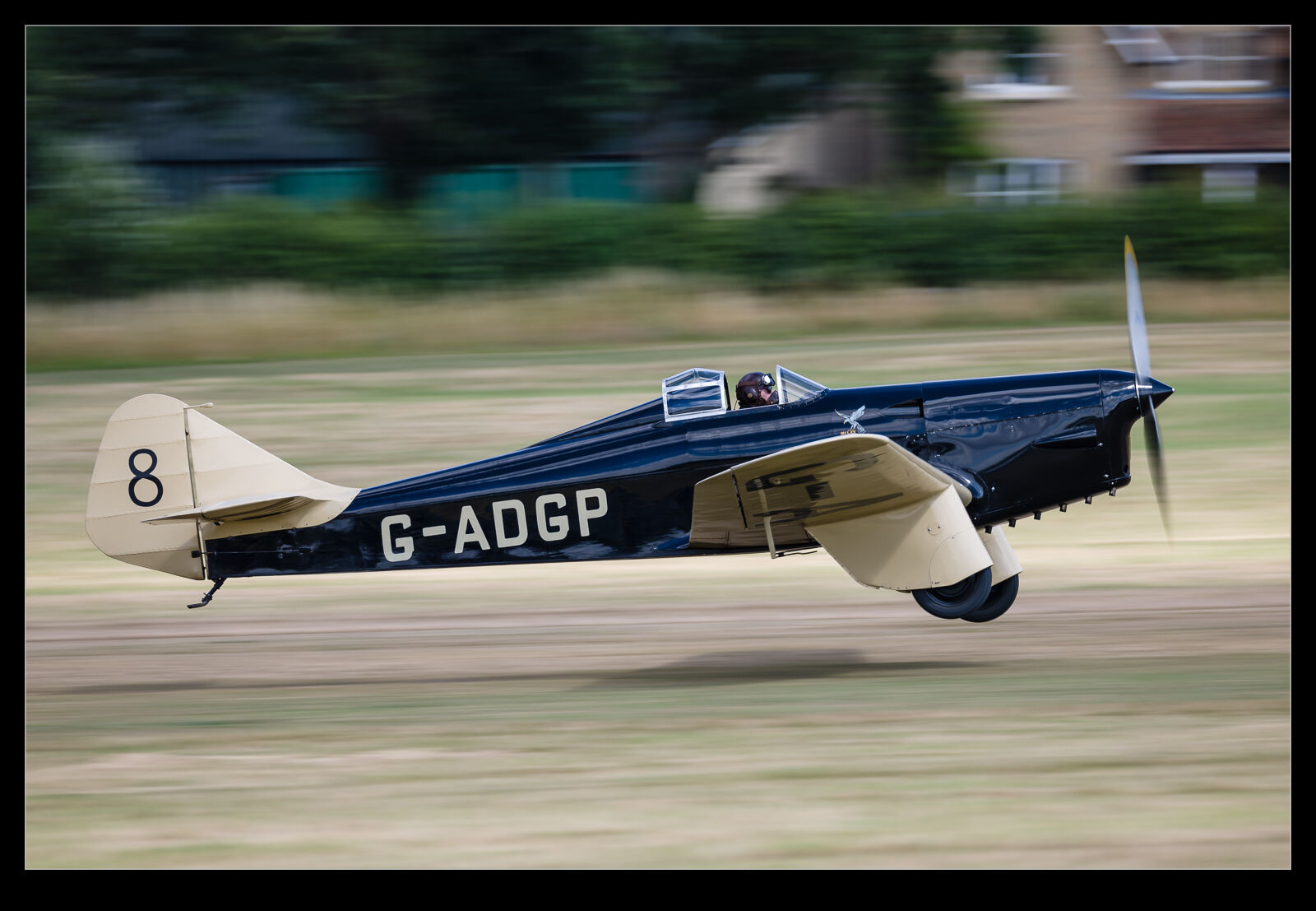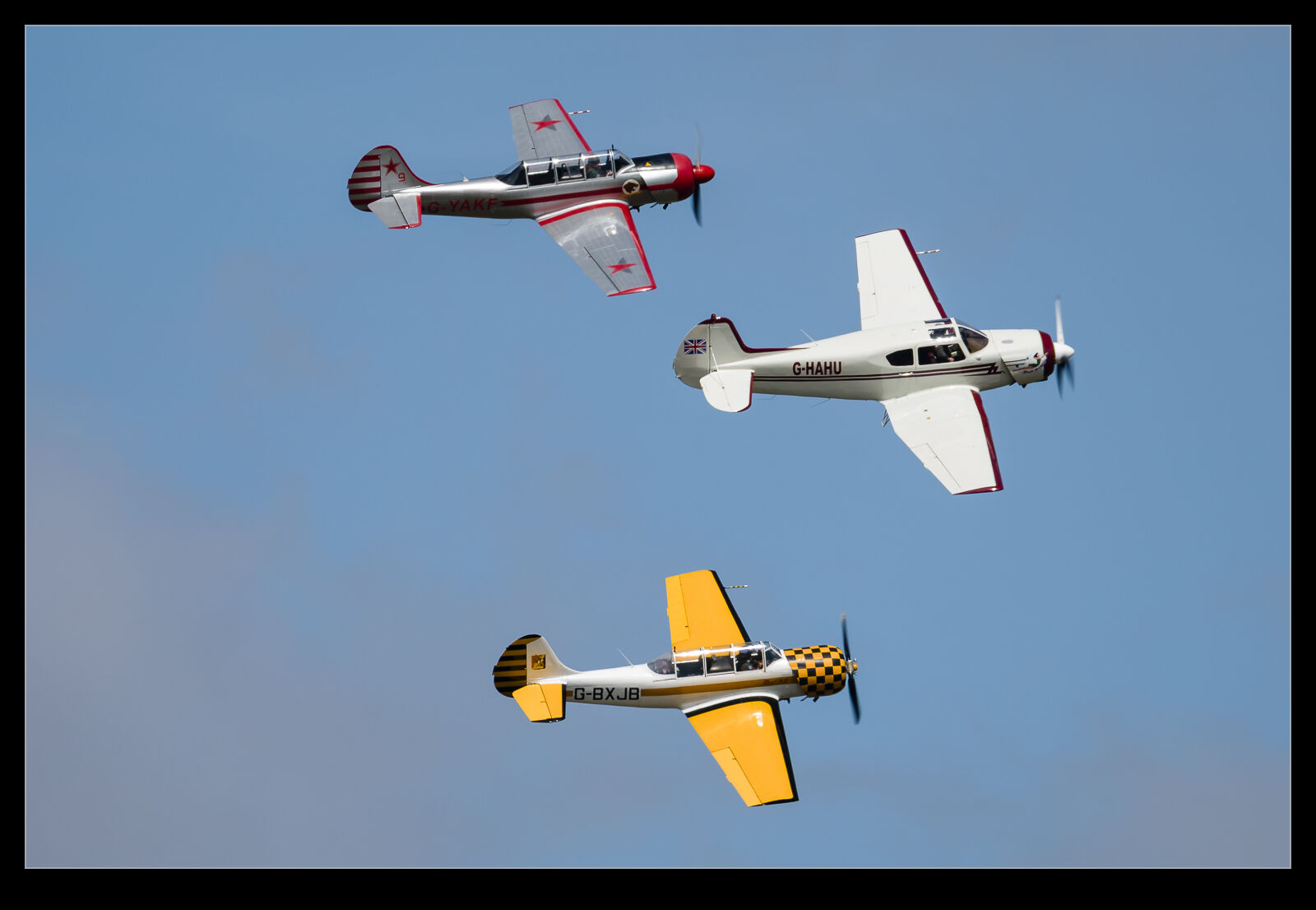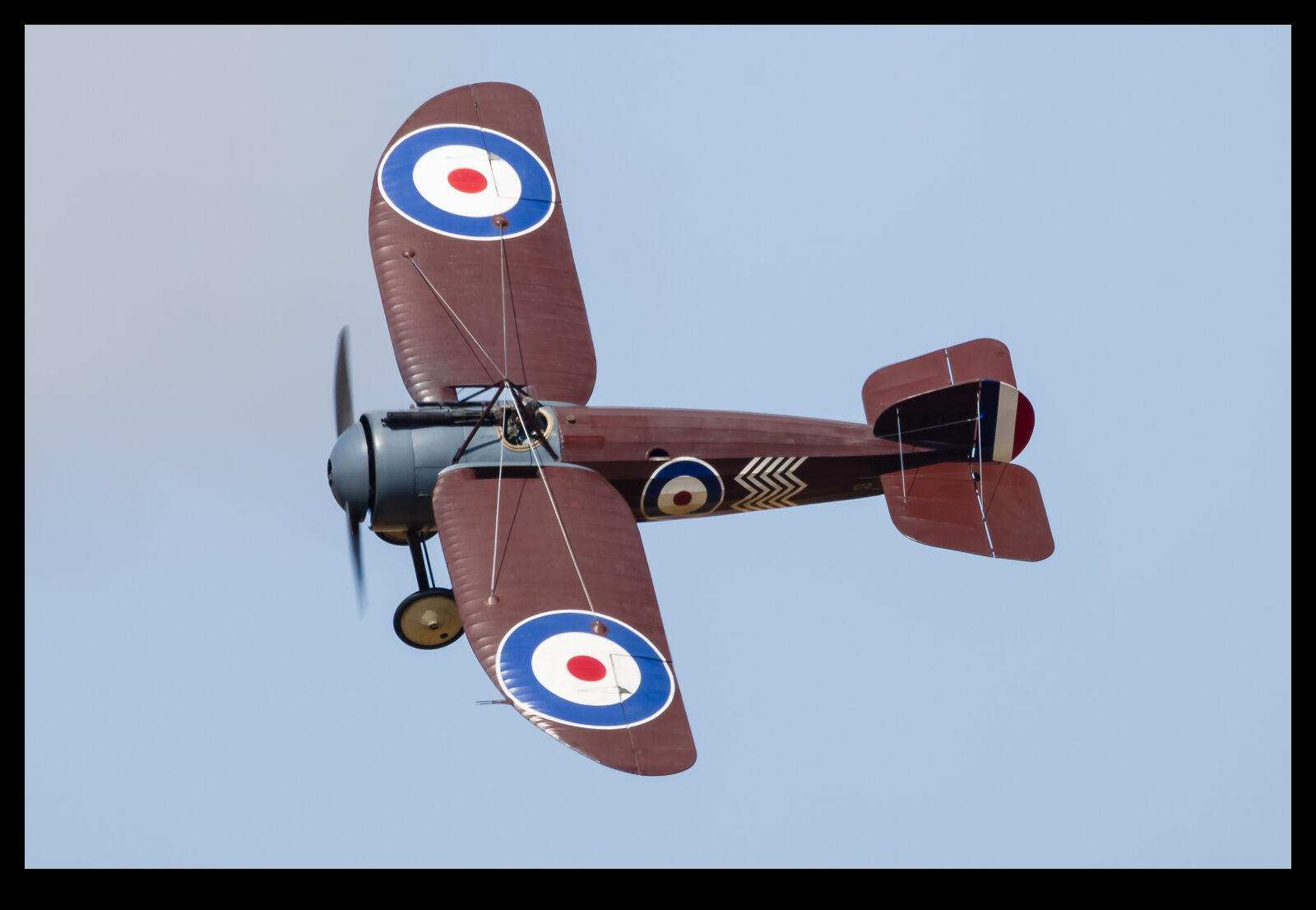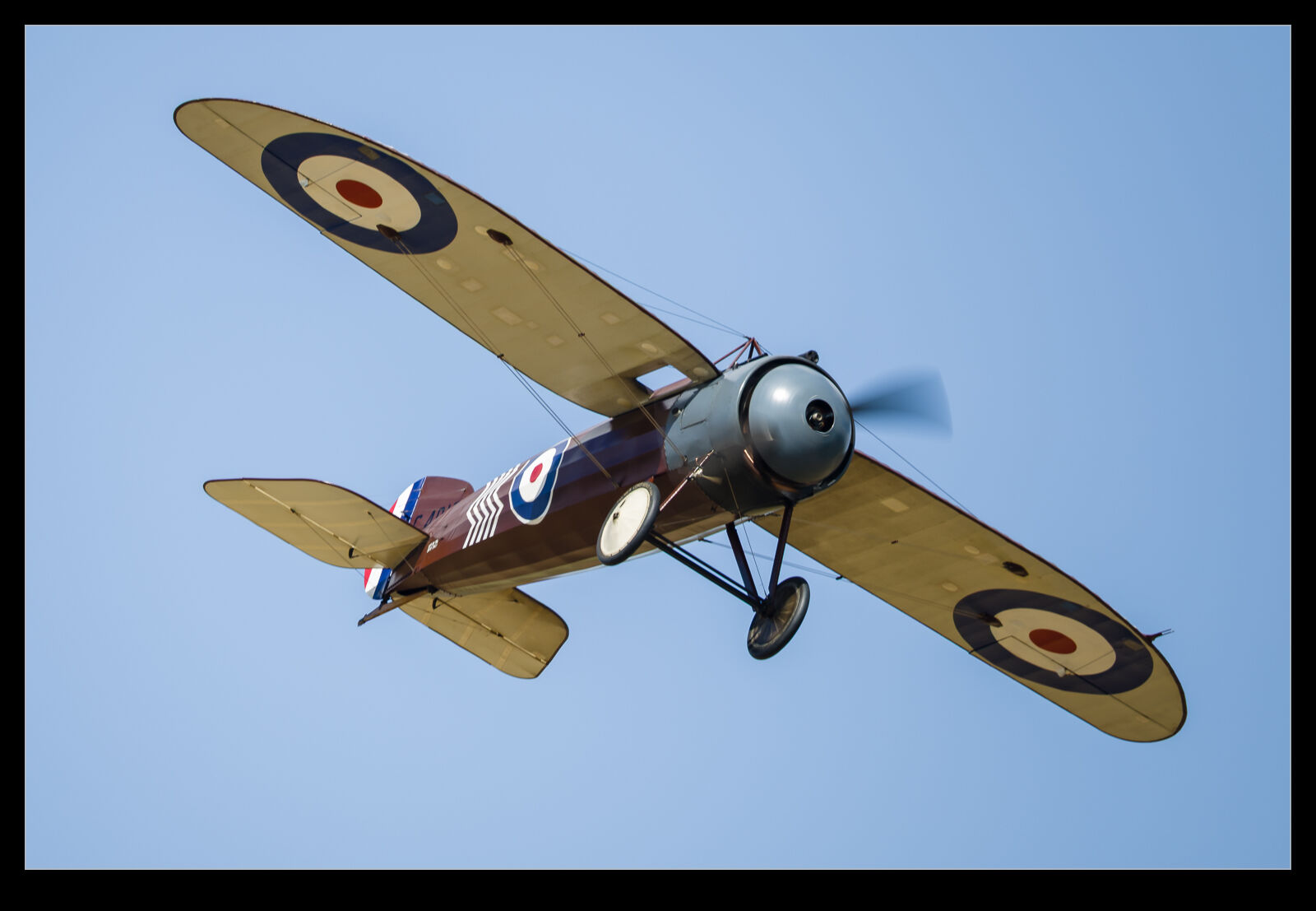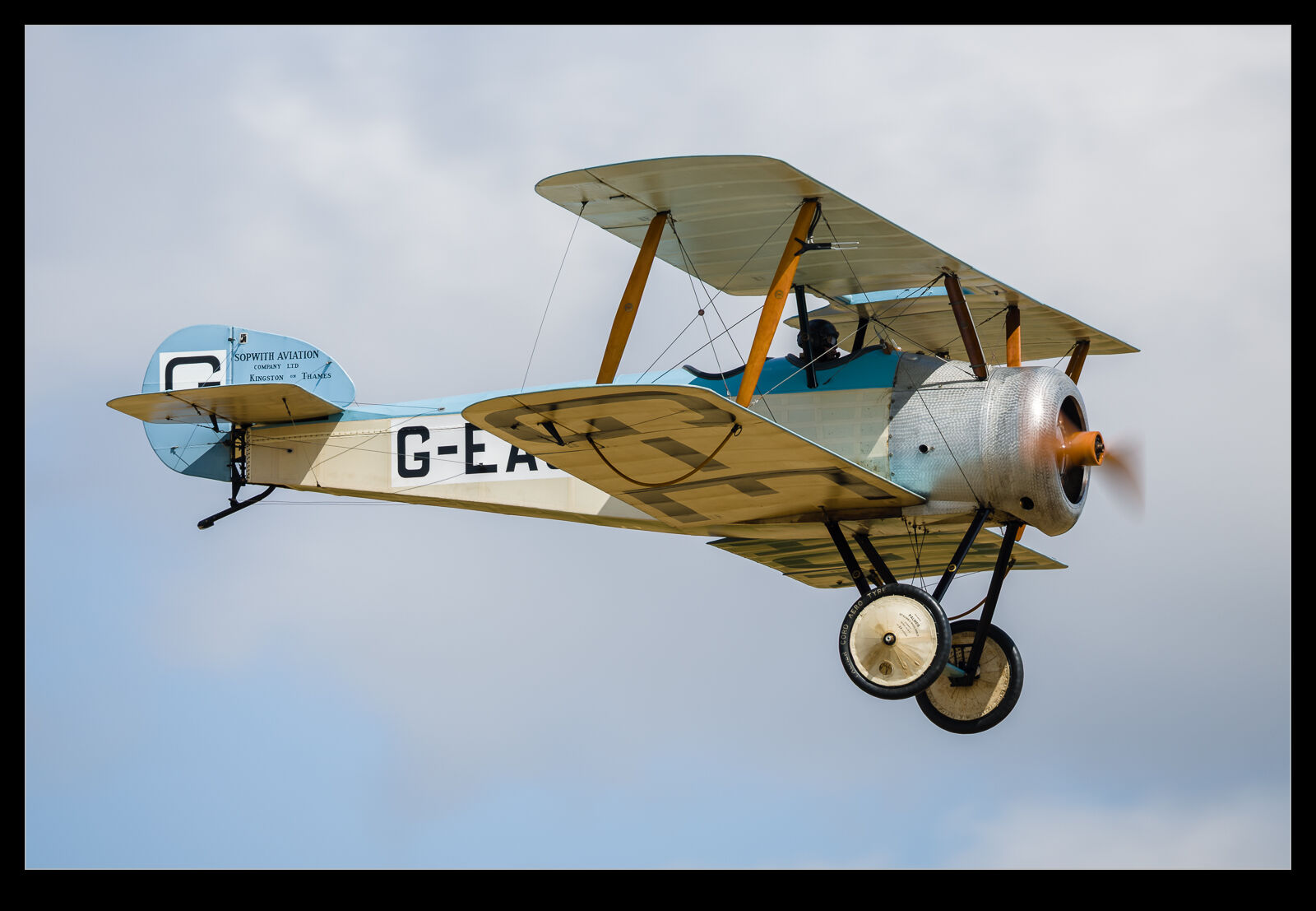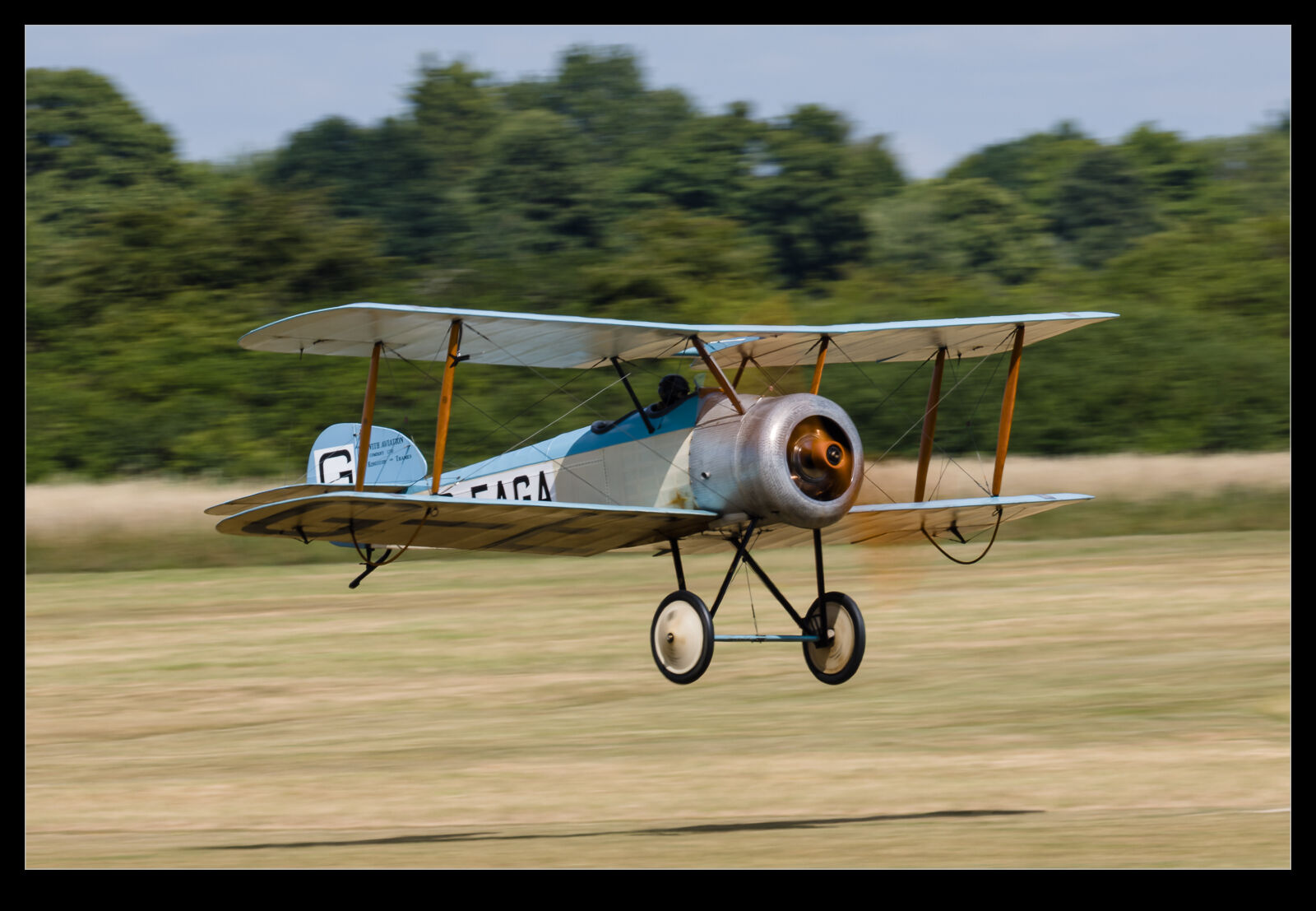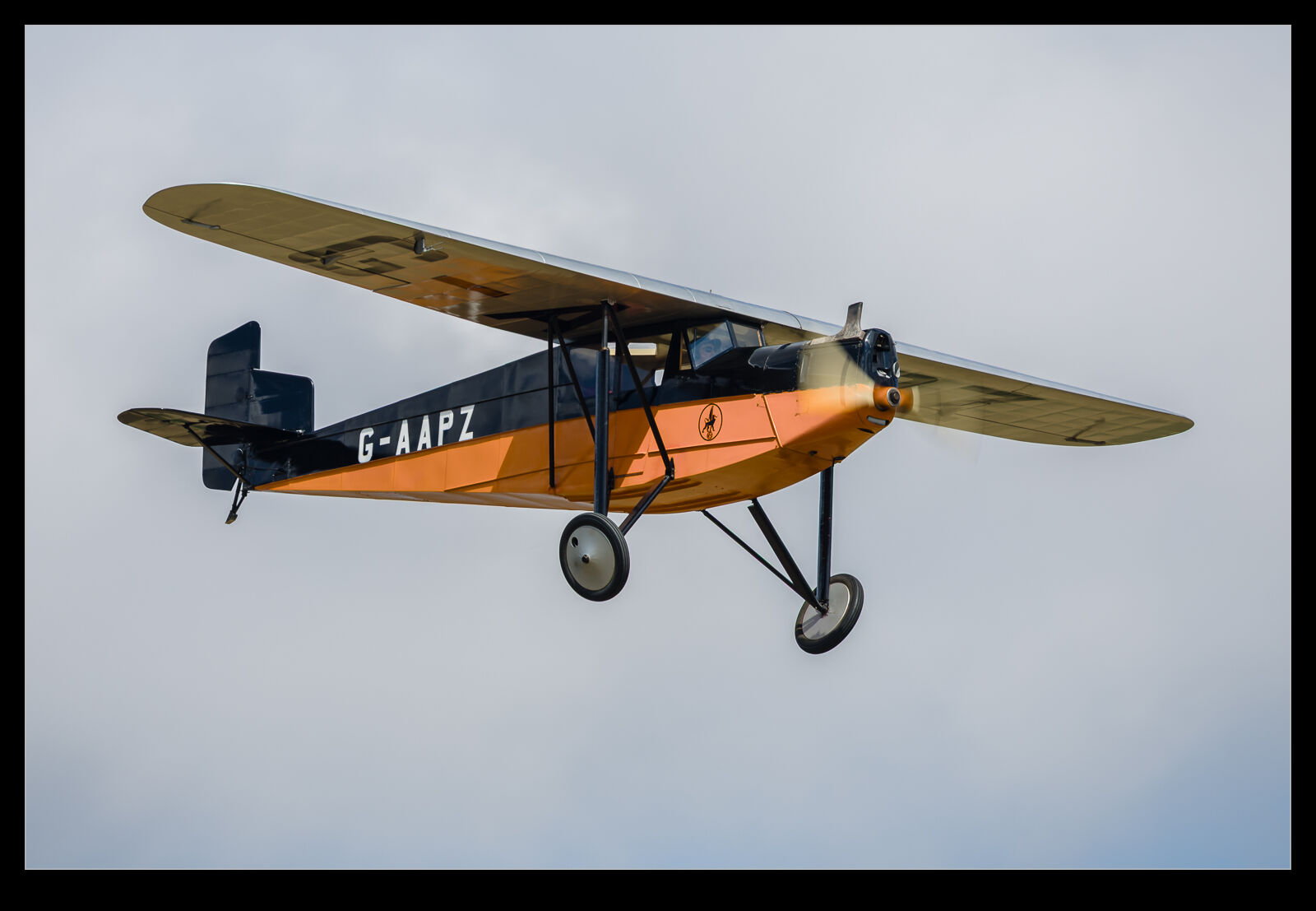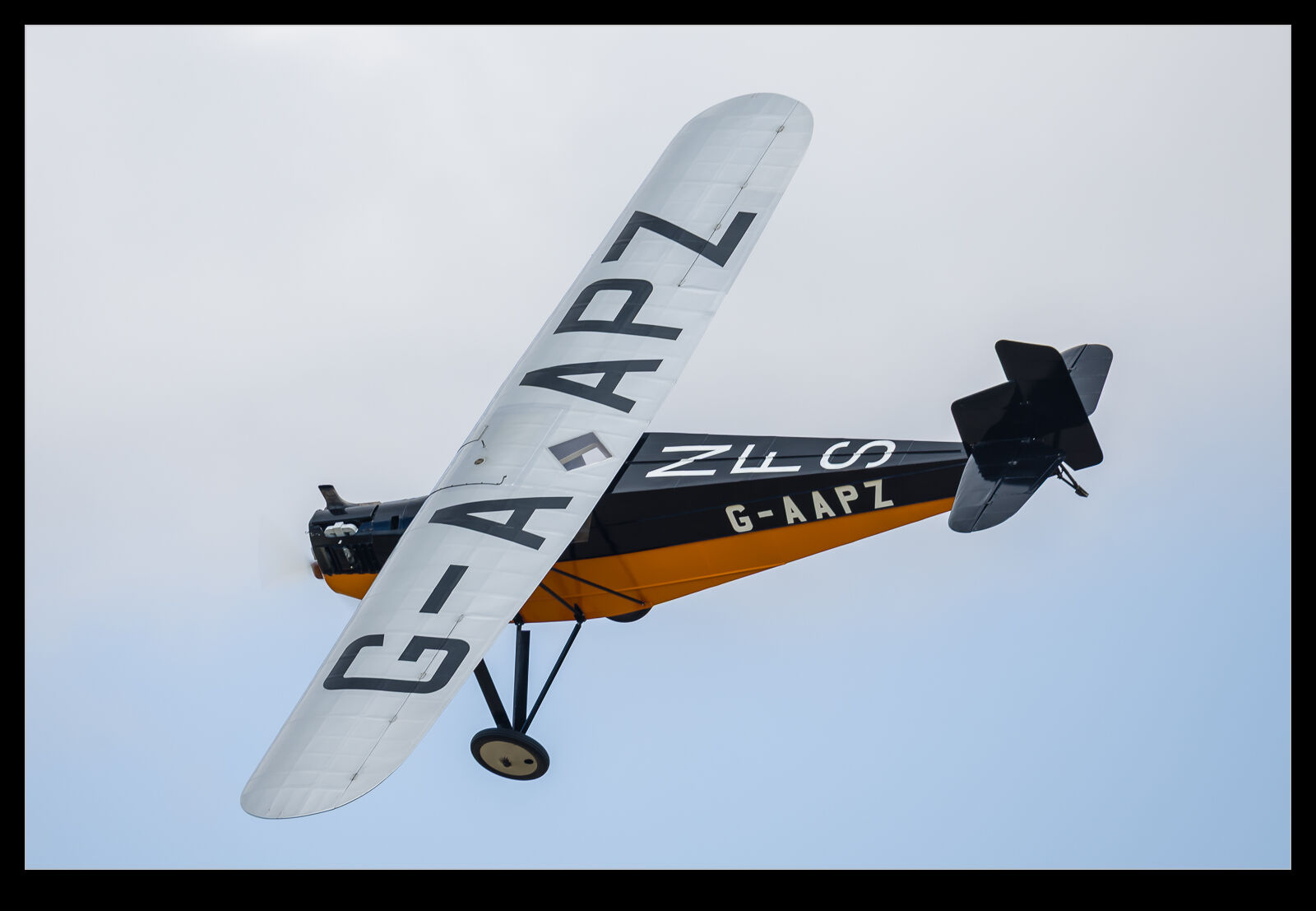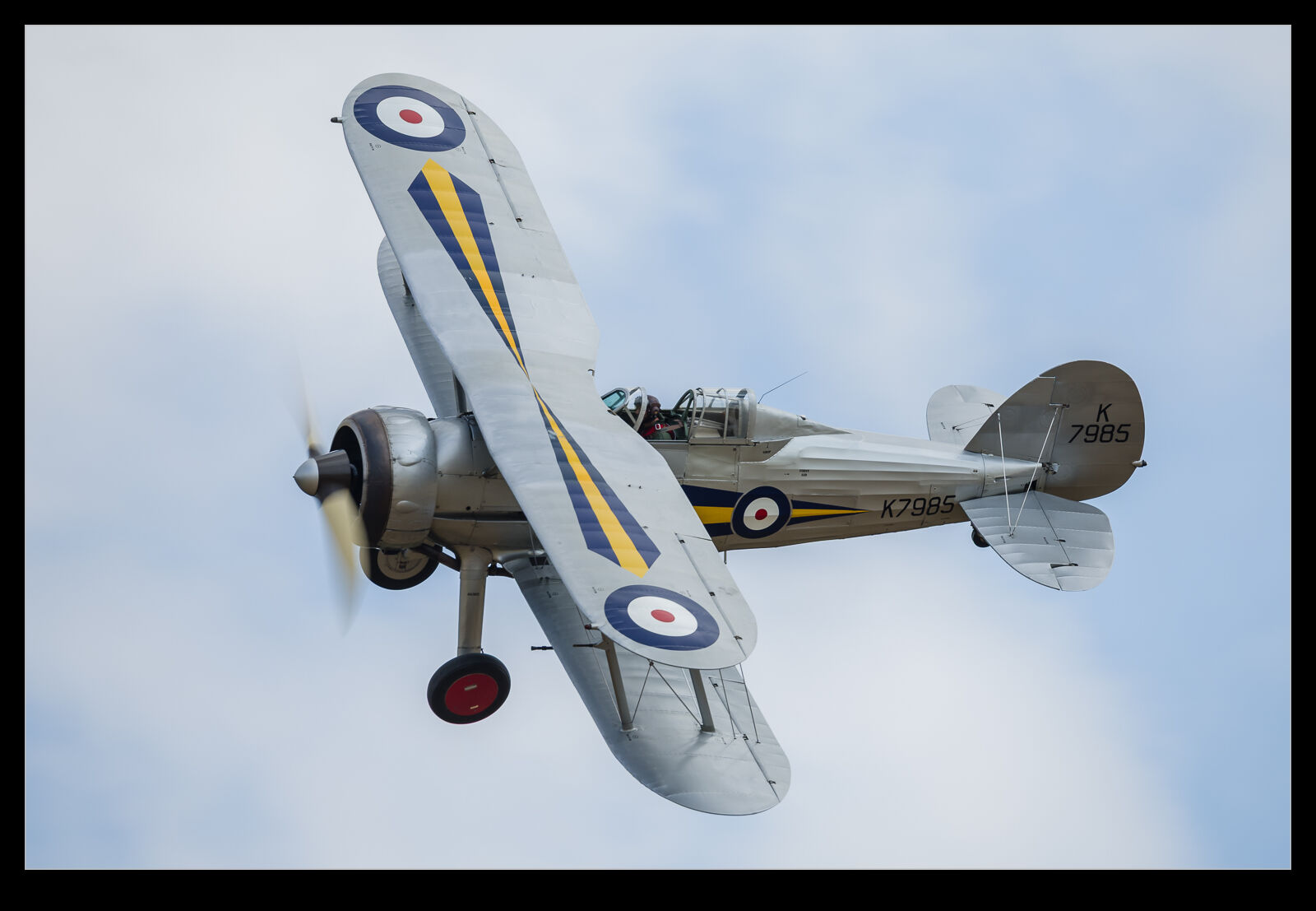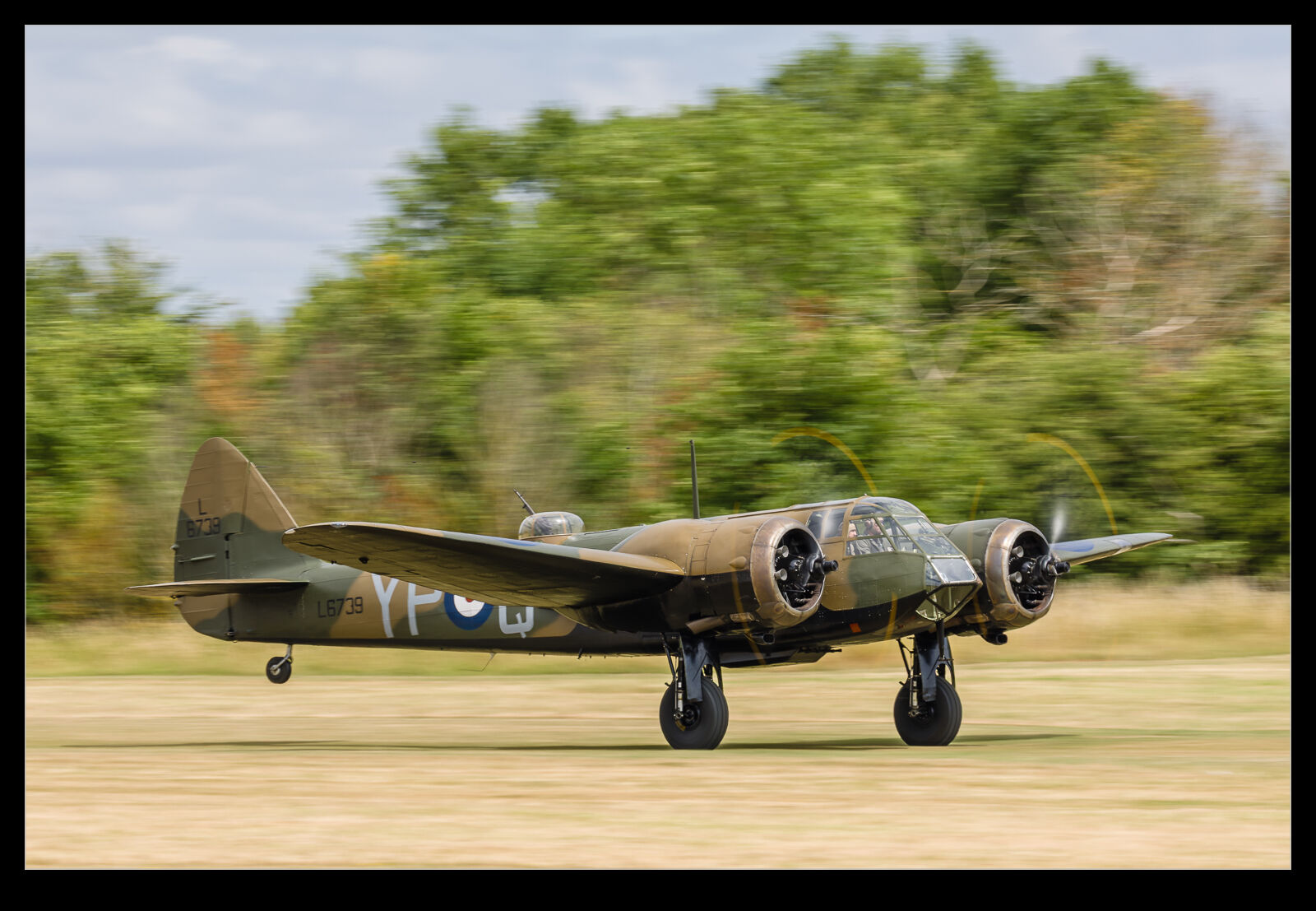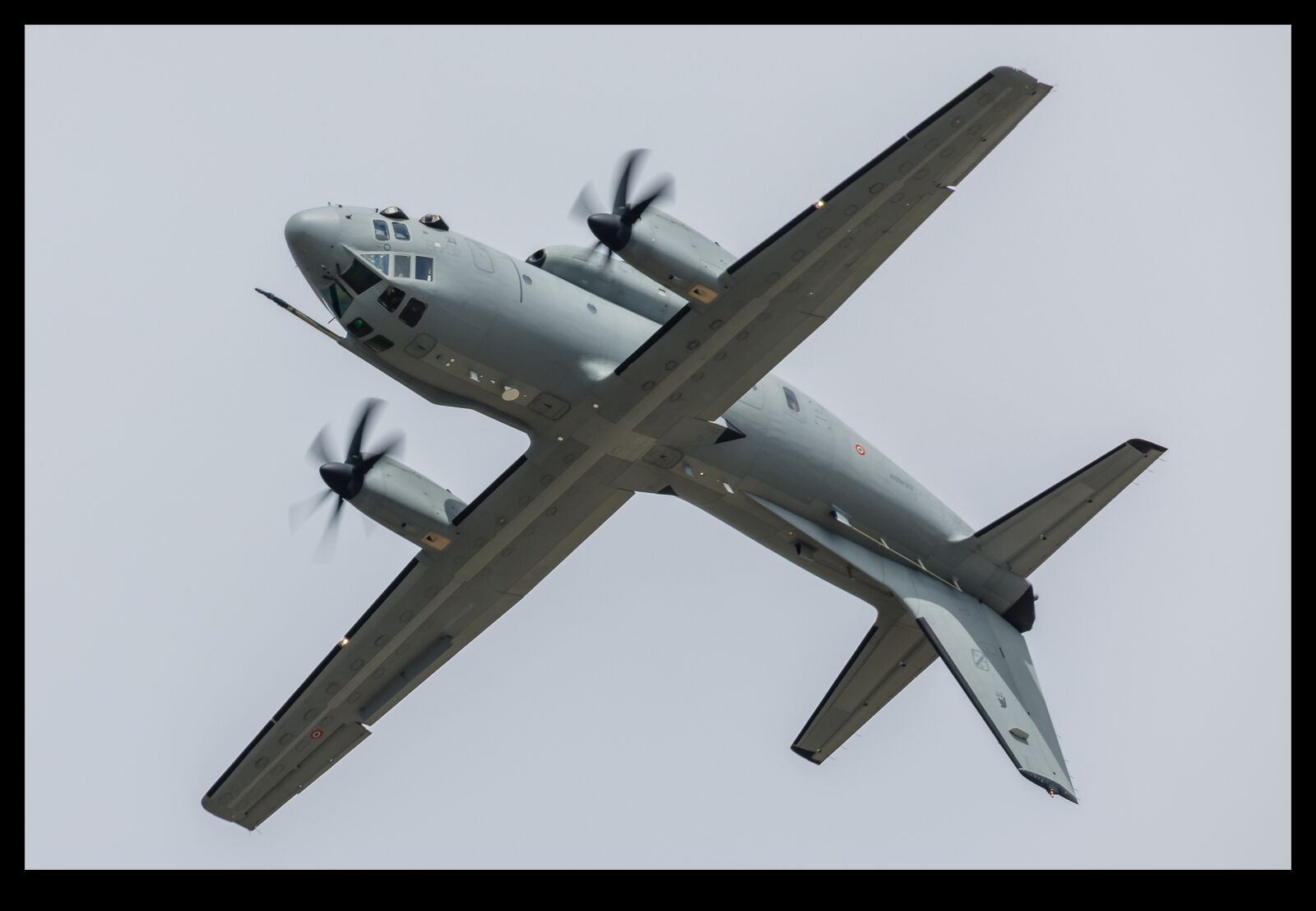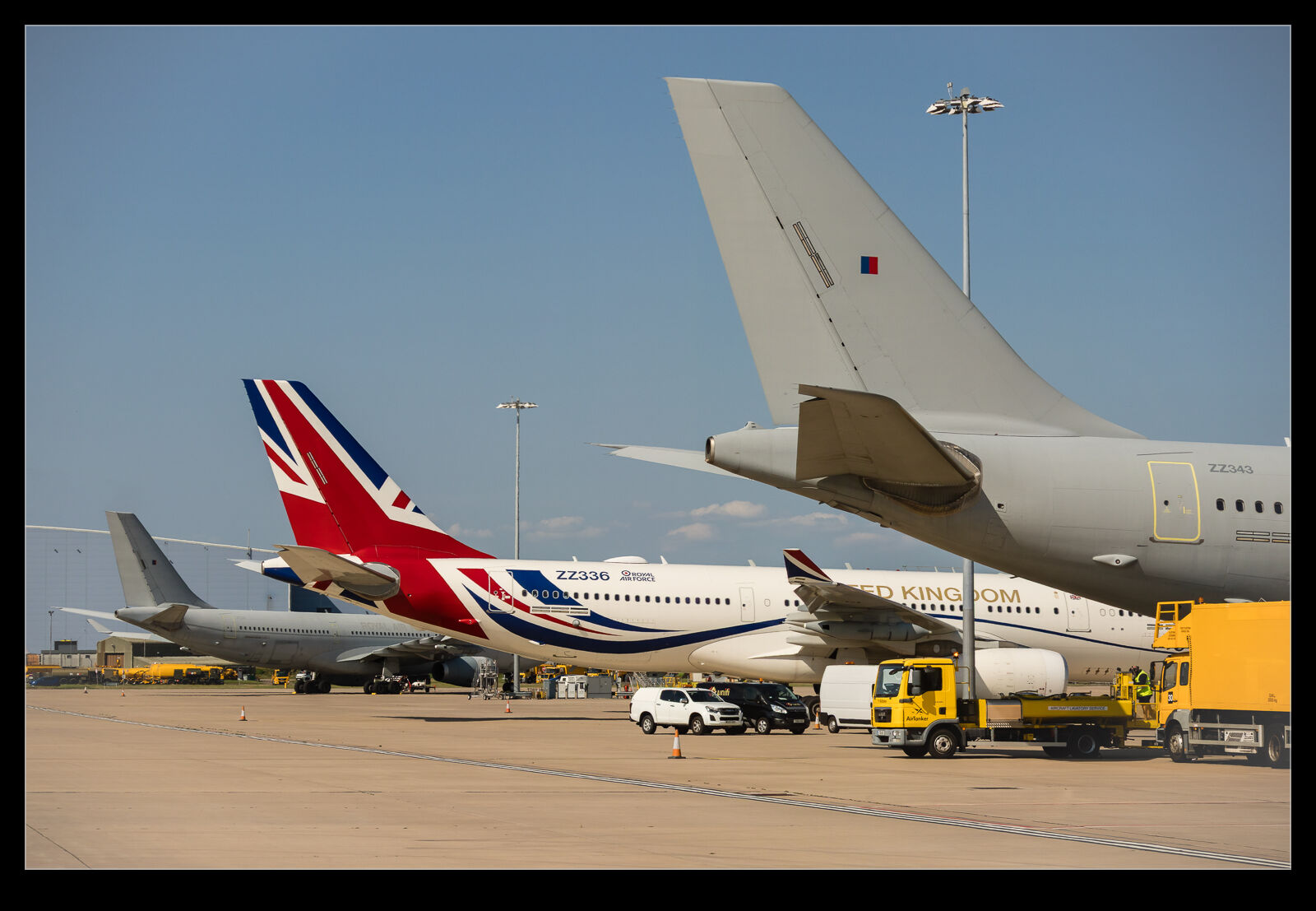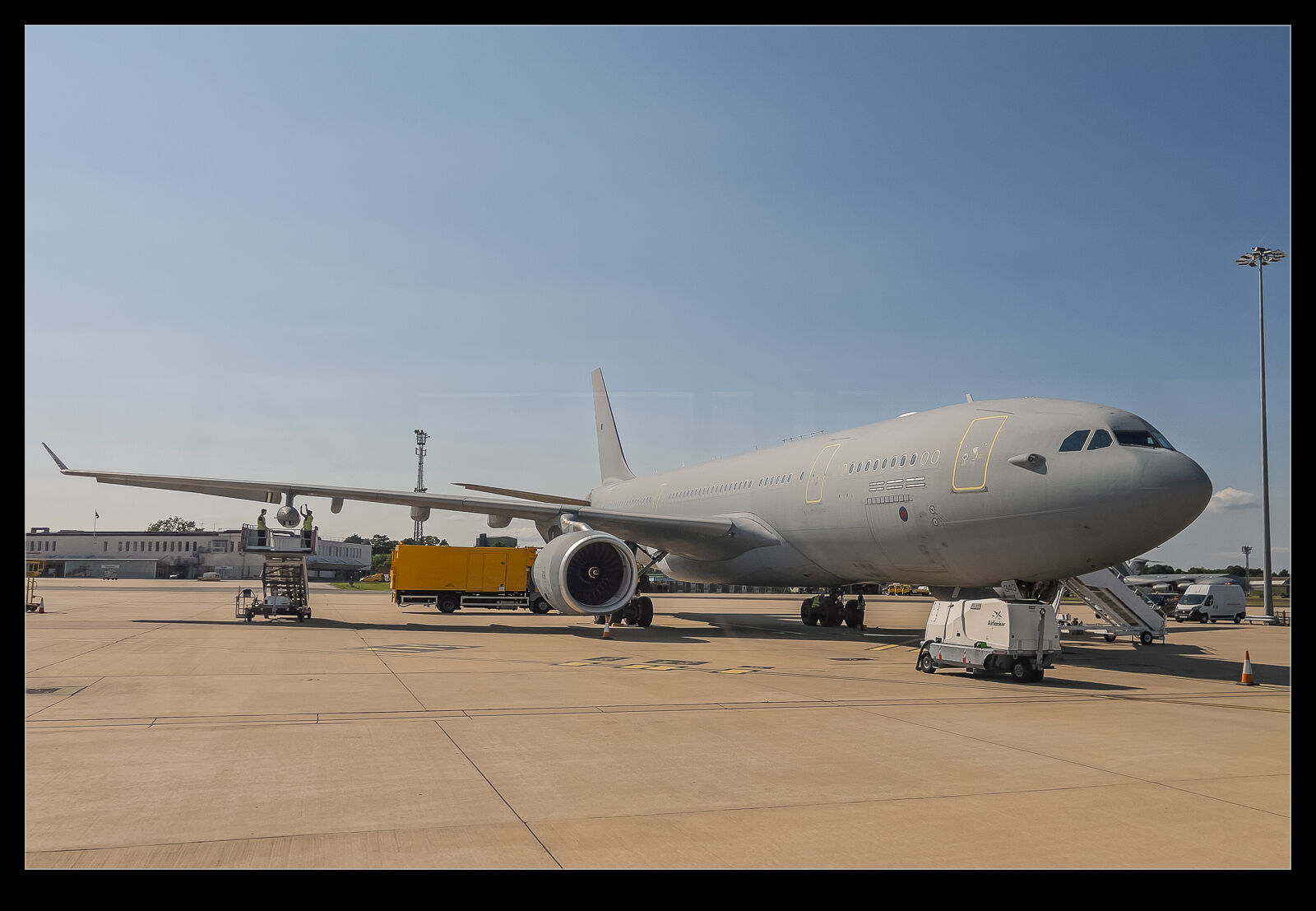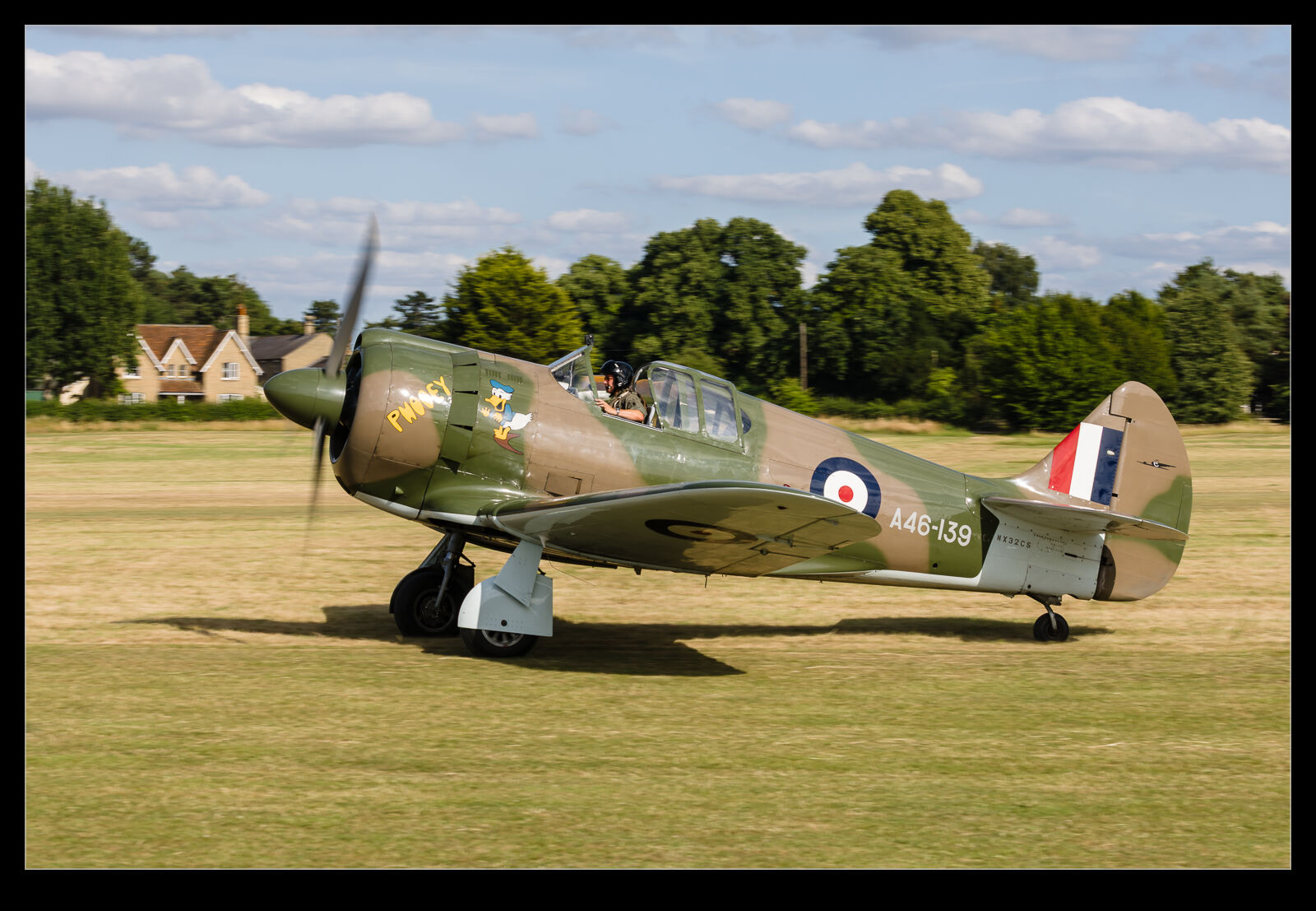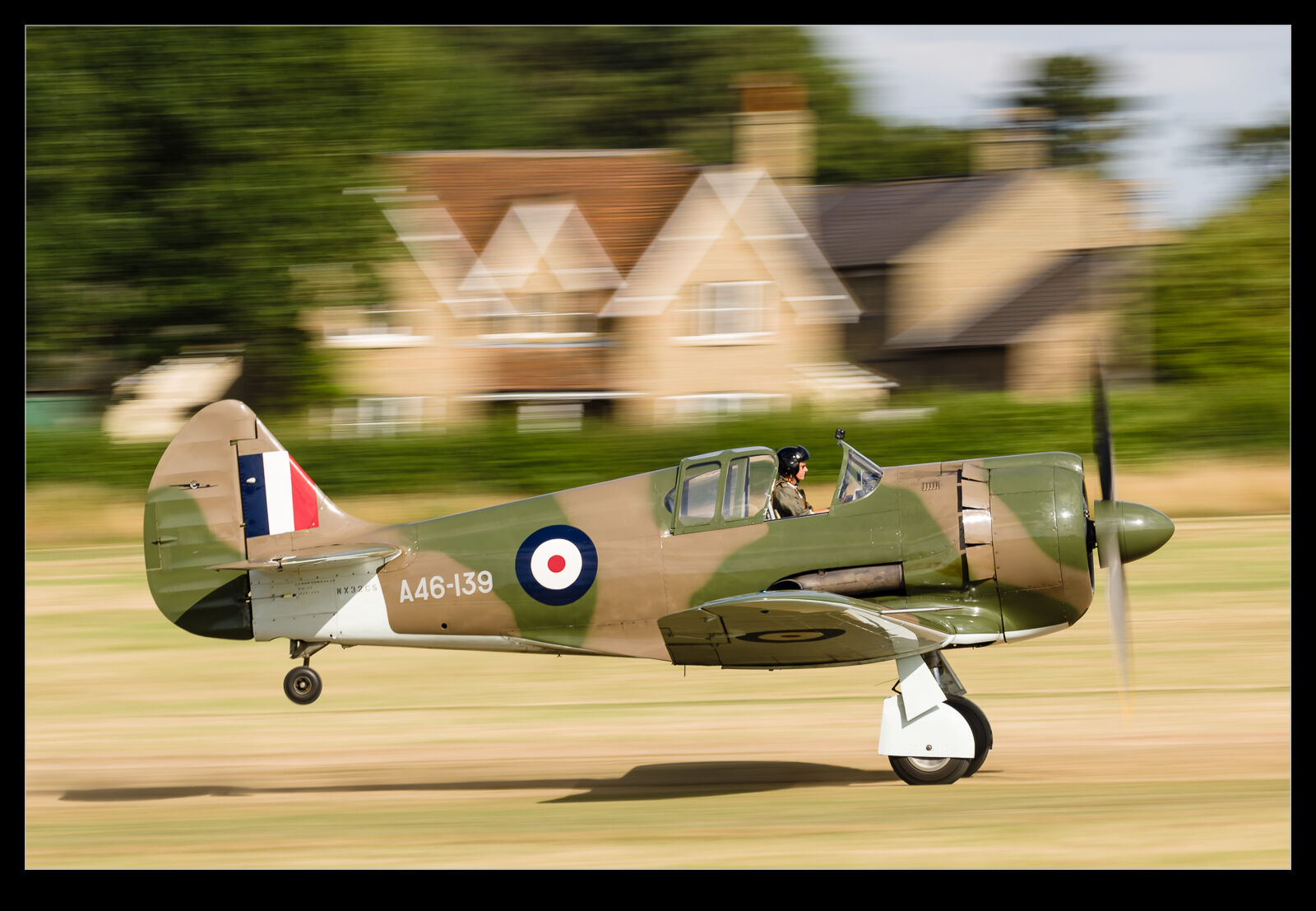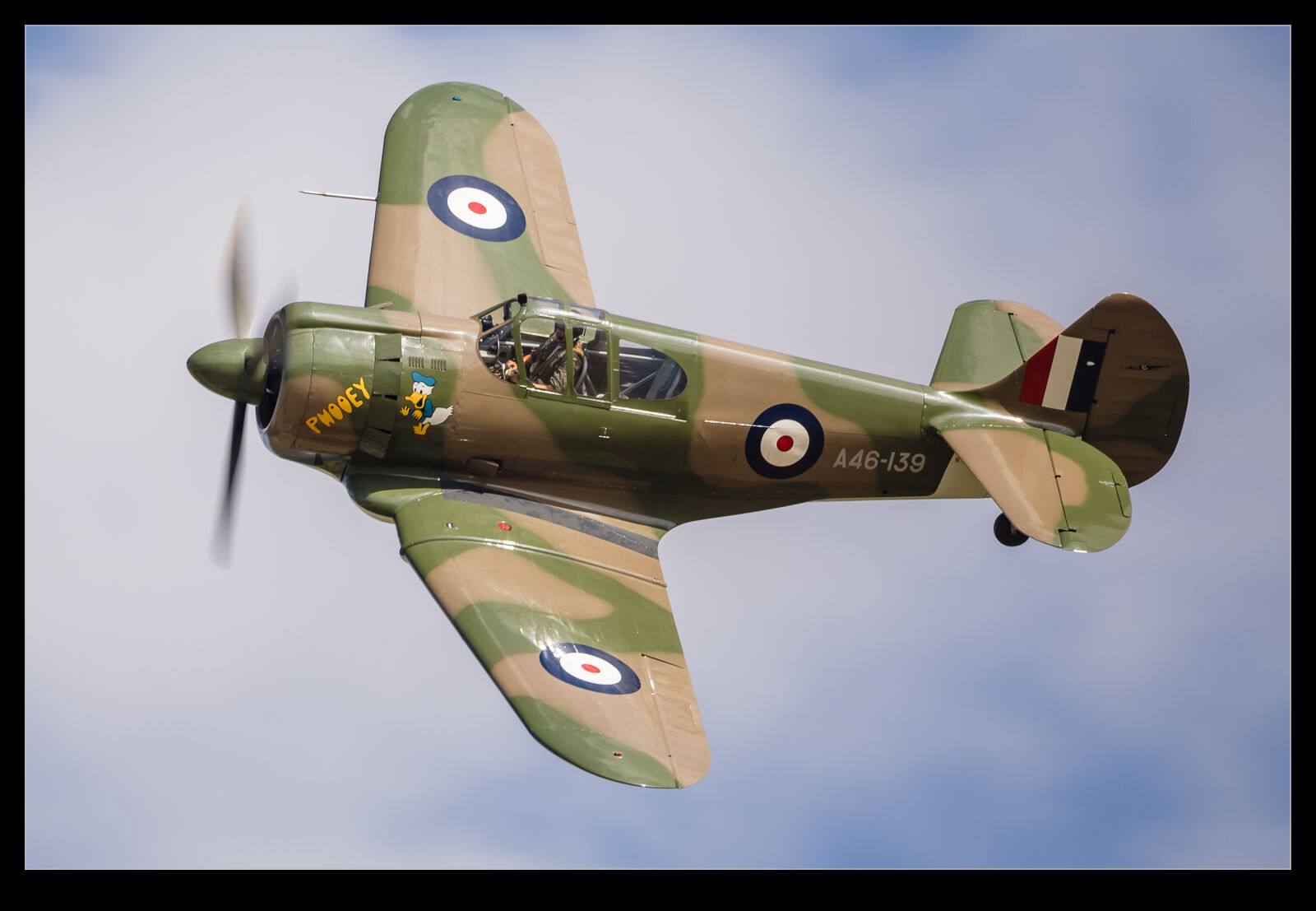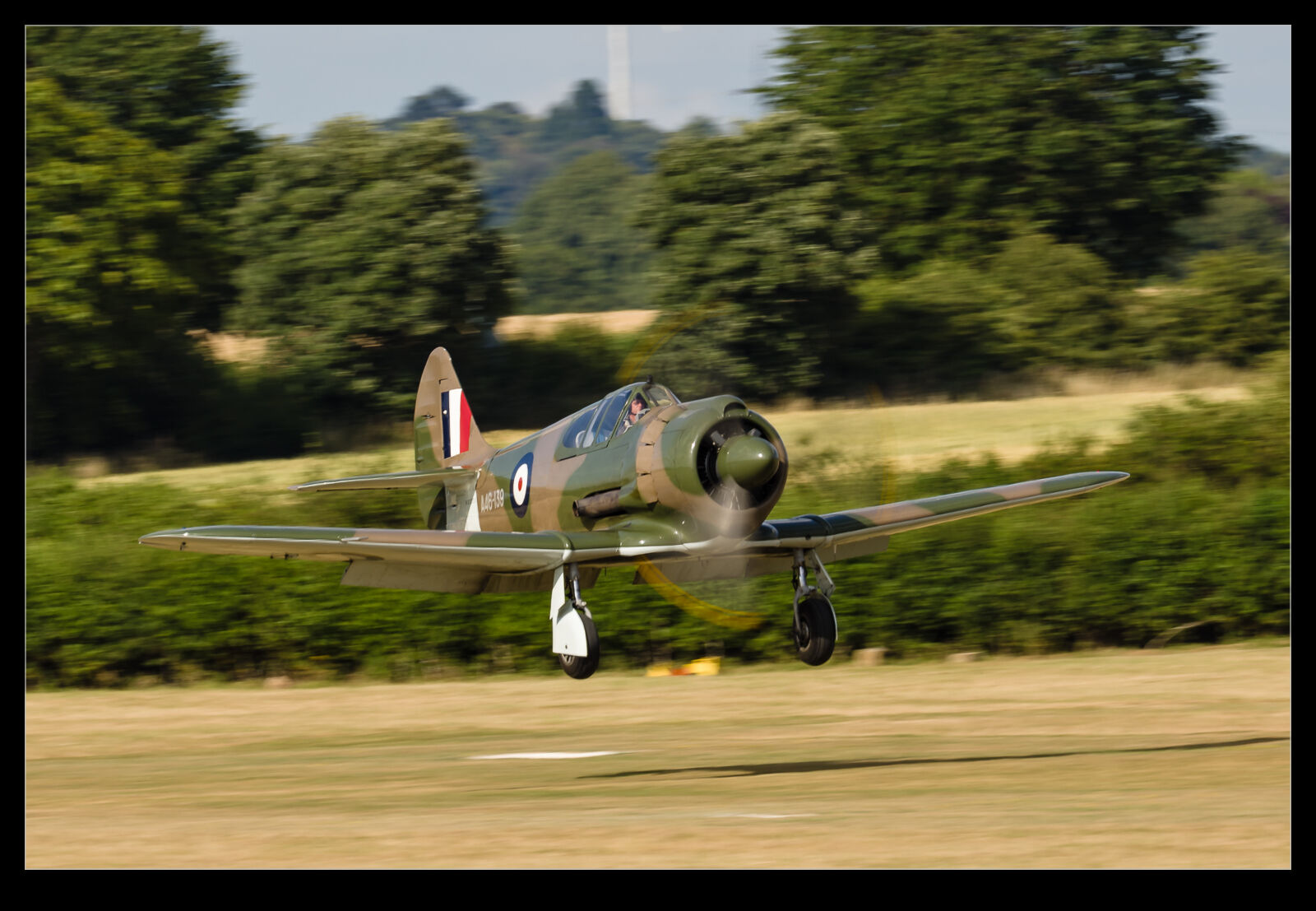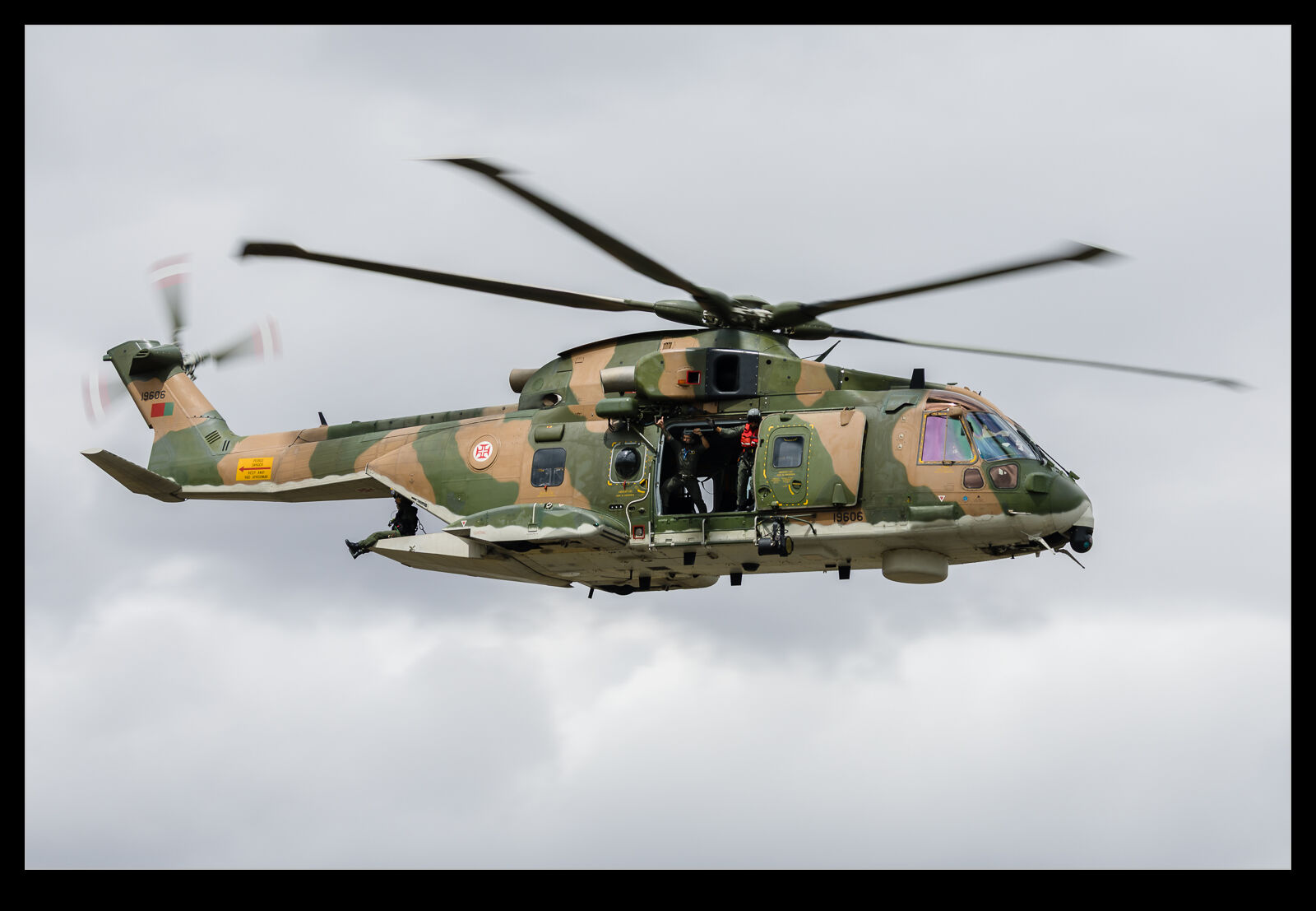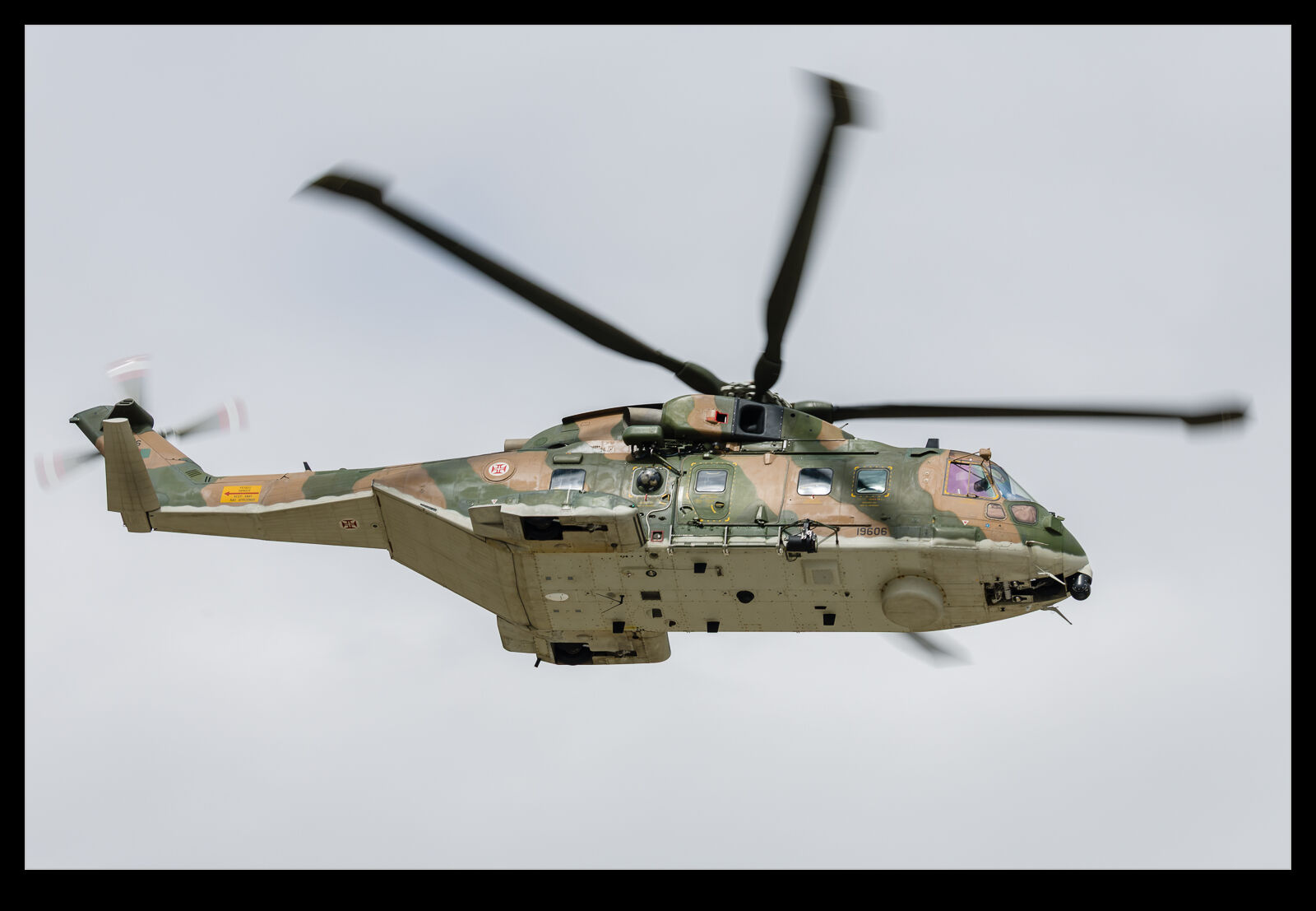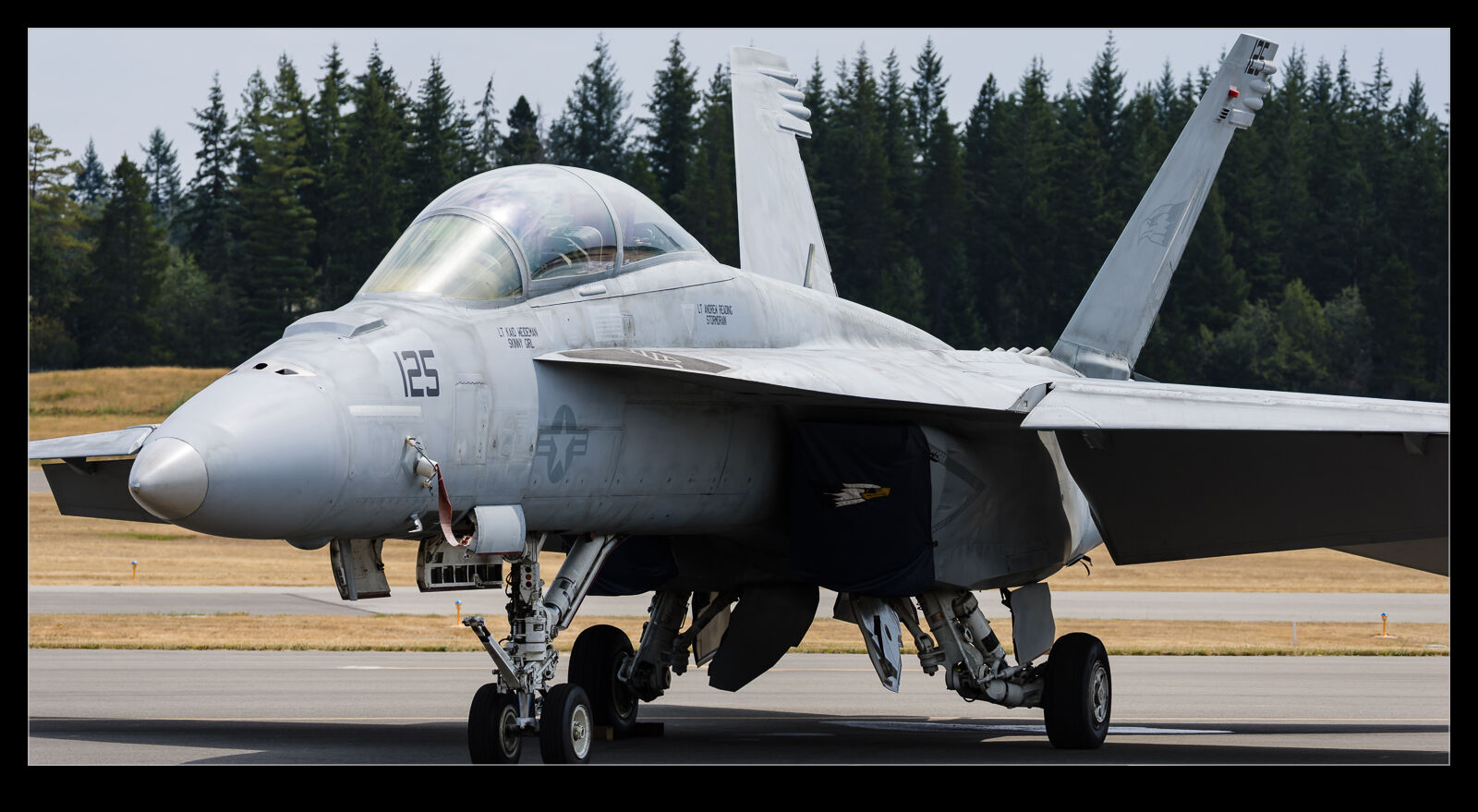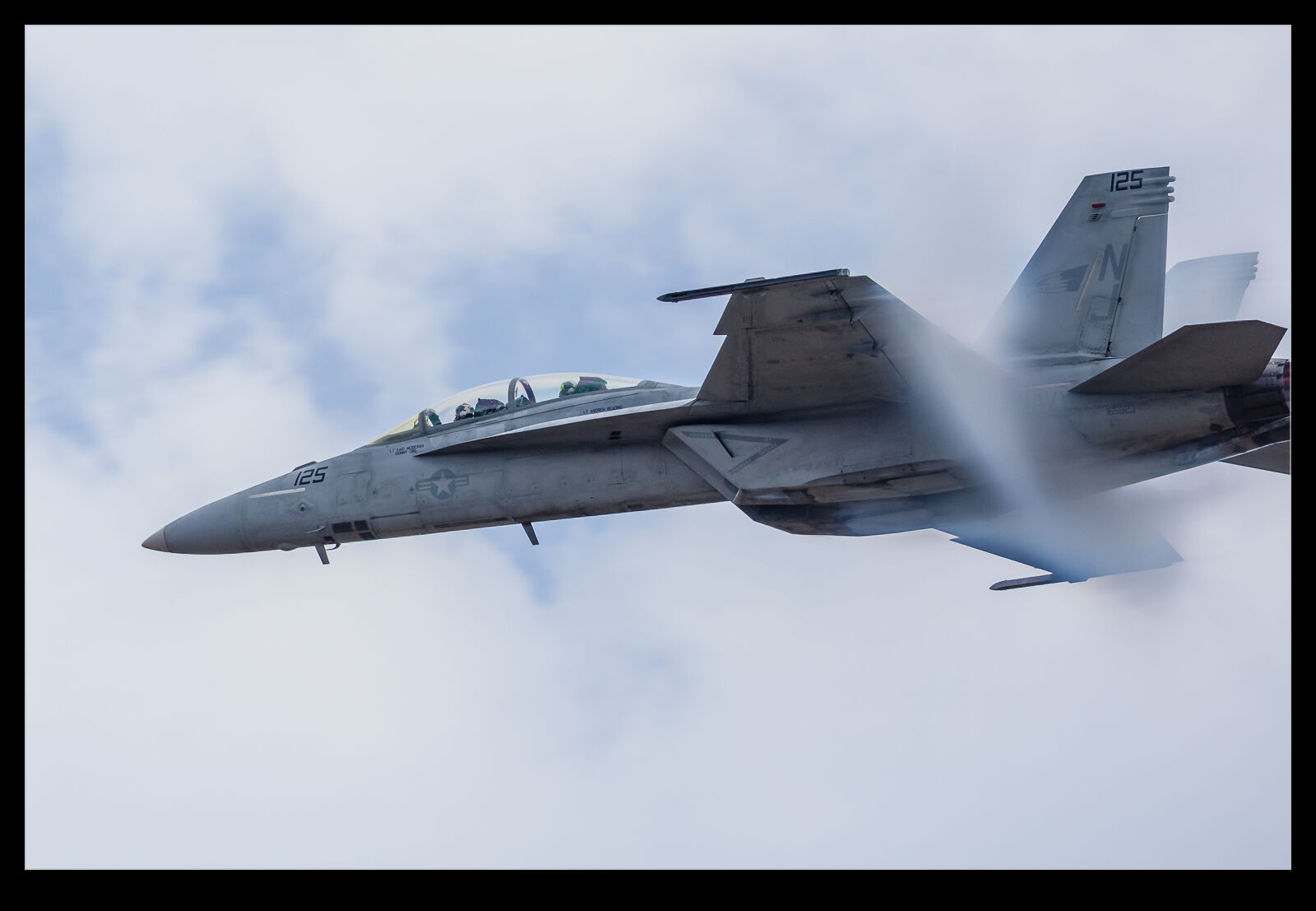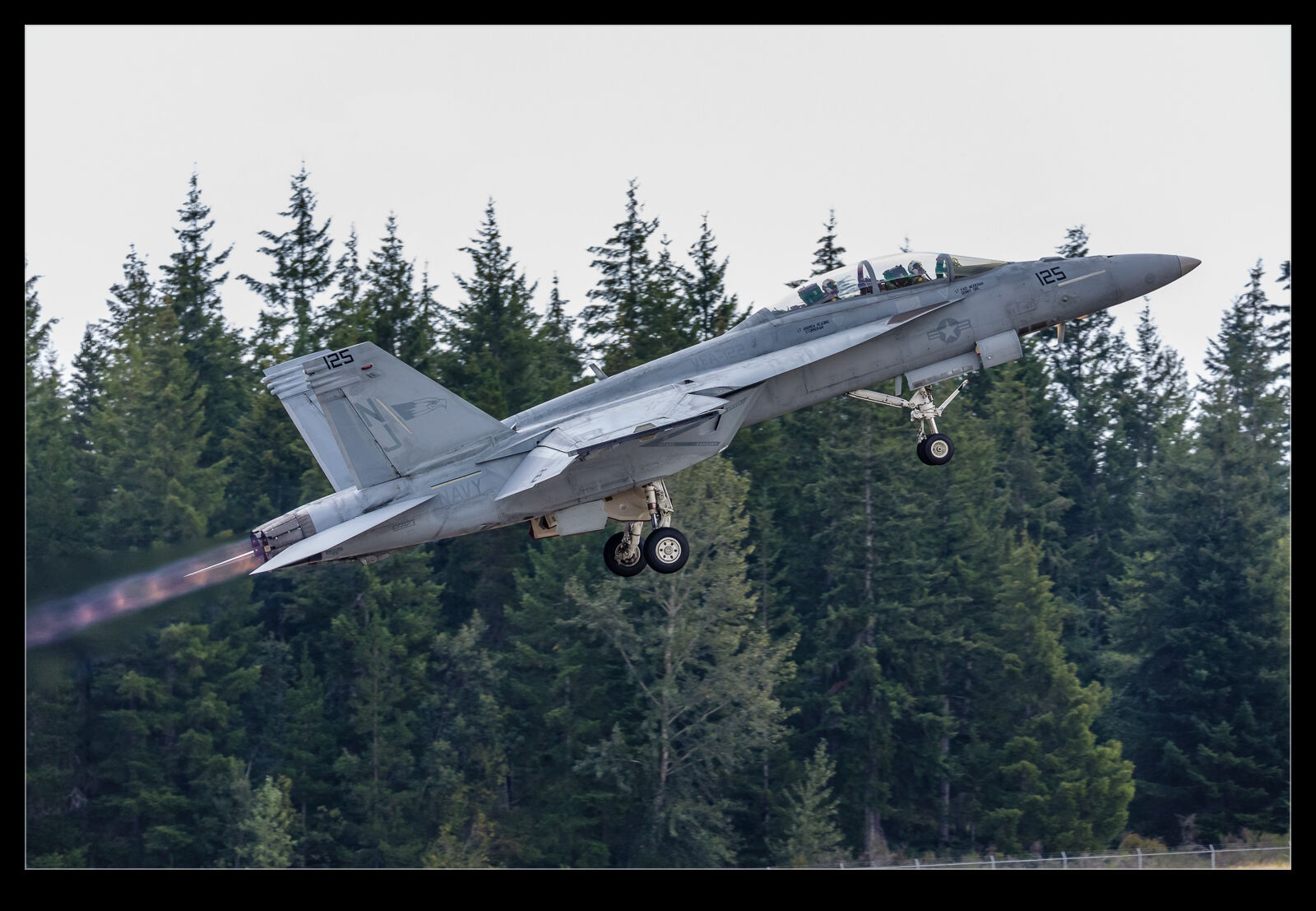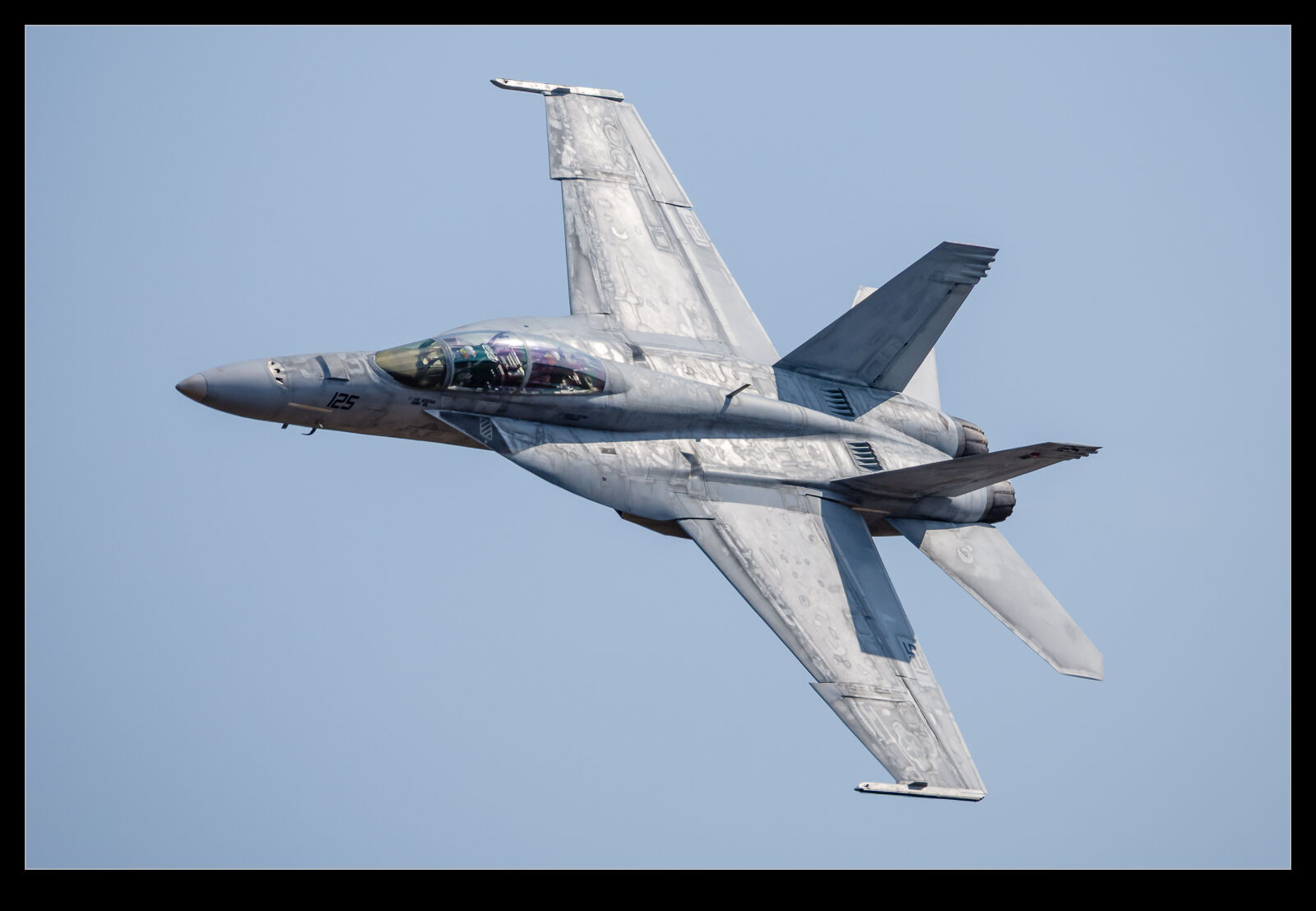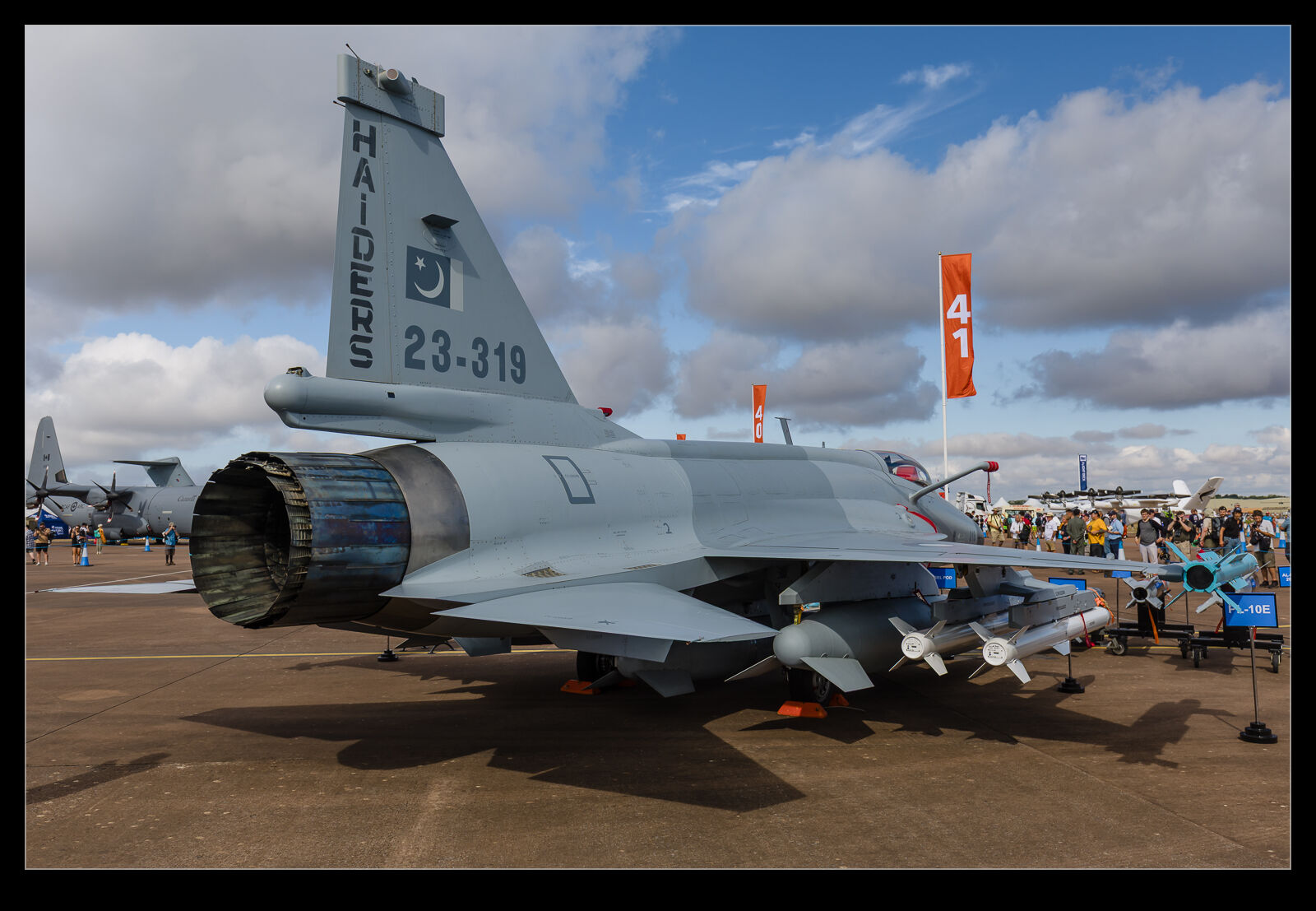 The JF-17 Thunder was one of the interesting aircraft to make it to RIAT in 2025. It had been before, but this was the first time I got to see it. The Pakistan Air Force brought a pair of them. I got to have a good look at one of them in the static park and something struck me about it. The engine installation. The plane is fitted with the Klimov RD93 engine which is a derivative of the engine for the MiG-29. The diameter of the nozzle for the engine seems to be very small compared to the rear fuselage size. Afterbody drag is a big deal on fighters and I wonder how bad the penalty is for this configuration. I understand that China is developing an engine to replace the RD93 and maybe the sizing of the fuselage is for this new engine. In the meantime, it does look like someone made do with the engine available.
The JF-17 Thunder was one of the interesting aircraft to make it to RIAT in 2025. It had been before, but this was the first time I got to see it. The Pakistan Air Force brought a pair of them. I got to have a good look at one of them in the static park and something struck me about it. The engine installation. The plane is fitted with the Klimov RD93 engine which is a derivative of the engine for the MiG-29. The diameter of the nozzle for the engine seems to be very small compared to the rear fuselage size. Afterbody drag is a big deal on fighters and I wonder how bad the penalty is for this configuration. I understand that China is developing an engine to replace the RD93 and maybe the sizing of the fuselage is for this new engine. In the meantime, it does look like someone made do with the engine available.
Category Archives: military
Festival of Flight Other Stuff
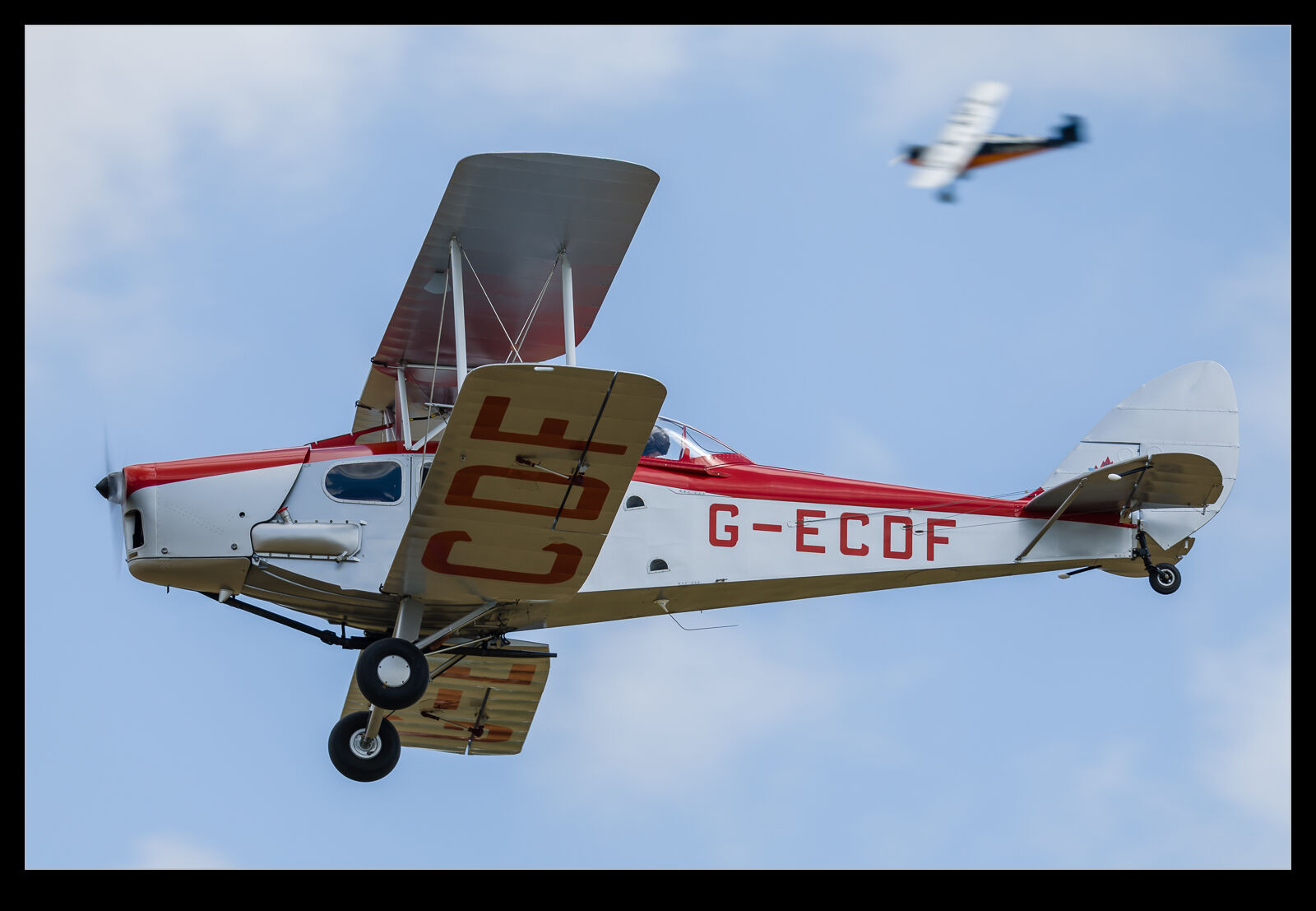 There have been a few posts of specific aircraft from the Shuttleworth’s Festival of Flight this summer. While those planes were of specific interest to me, there was an extensive display with many other types of planes taking part. Some of these were familiar types but some were new to me. This included variants of the de Havilland Moth family and an old Sopwith. I have run through the many shots I took that day and here is a selection of images of the displays although by no means a comprehensive one!
There have been a few posts of specific aircraft from the Shuttleworth’s Festival of Flight this summer. While those planes were of specific interest to me, there was an extensive display with many other types of planes taking part. Some of these were familiar types but some were new to me. This included variants of the de Havilland Moth family and an old Sopwith. I have run through the many shots I took that day and here is a selection of images of the displays although by no means a comprehensive one!
Throwing a Transport Around the Sky
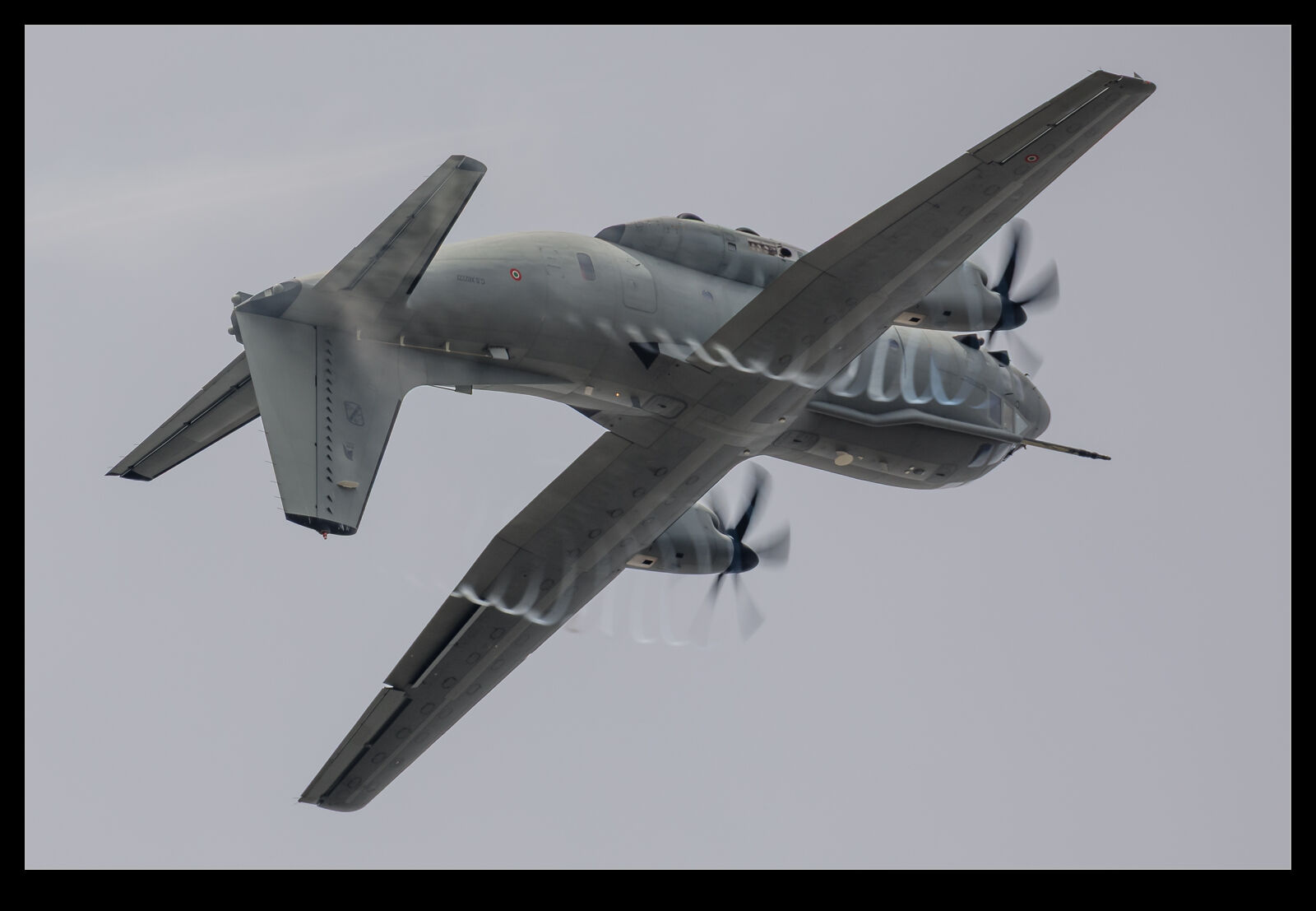 I have seen plenty of footage of C-27J displays where the crews make use of the plentiful power of the type to undertake aerobatics. However, I had never seen it in person. The only C-27Js I had seen display were from the US Coast Guard and they were much more benign in their performance. RIAT brought an example from the Italian Air Force’s test centre and the crew that displayed it knew exactly how much performance they could wring from it.
I have seen plenty of footage of C-27J displays where the crews make use of the plentiful power of the type to undertake aerobatics. However, I had never seen it in person. The only C-27Js I had seen display were from the US Coast Guard and they were much more benign in their performance. RIAT brought an example from the Italian Air Force’s test centre and the crew that displayed it knew exactly how much performance they could wring from it.
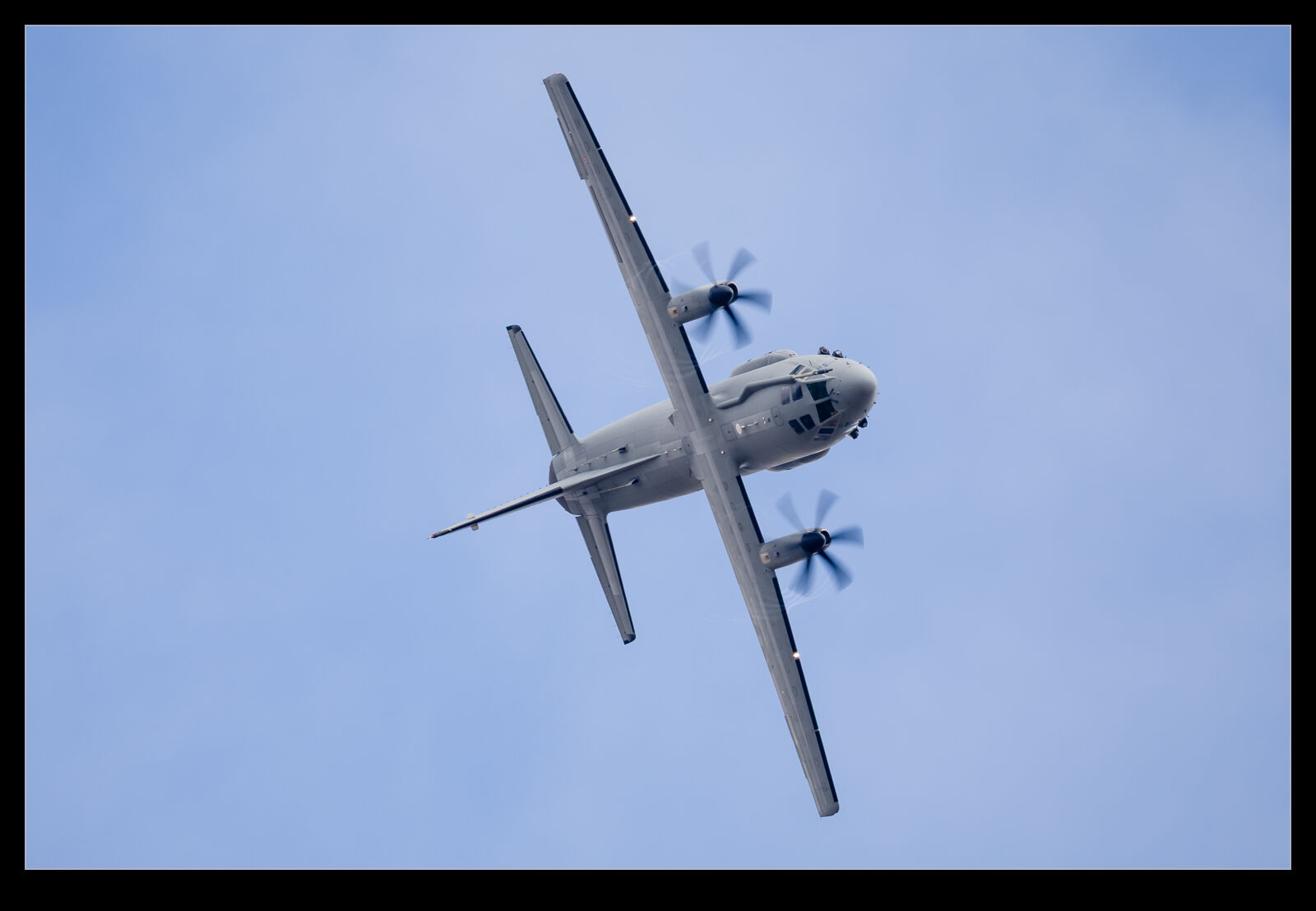 They displayed a few times during the show, and each performance was worth stopping to watch. The ability to loop and roll a decent sized transport was impressive. The conditions during some of the displays were not ideal from a lighting point of view but the humidity in the air did make for some great prop vortices. An inverted plane streaming vapour from the props makes for an interesting image. If you haven’t had the chance to see the display and an opportunity presents itself, do be there.
They displayed a few times during the show, and each performance was worth stopping to watch. The ability to loop and roll a decent sized transport was impressive. The conditions during some of the displays were not ideal from a lighting point of view but the humidity in the air did make for some great prop vortices. An inverted plane streaming vapour from the props makes for an interesting image. If you haven’t had the chance to see the display and an opportunity presents itself, do be there.
On the Voyager Line
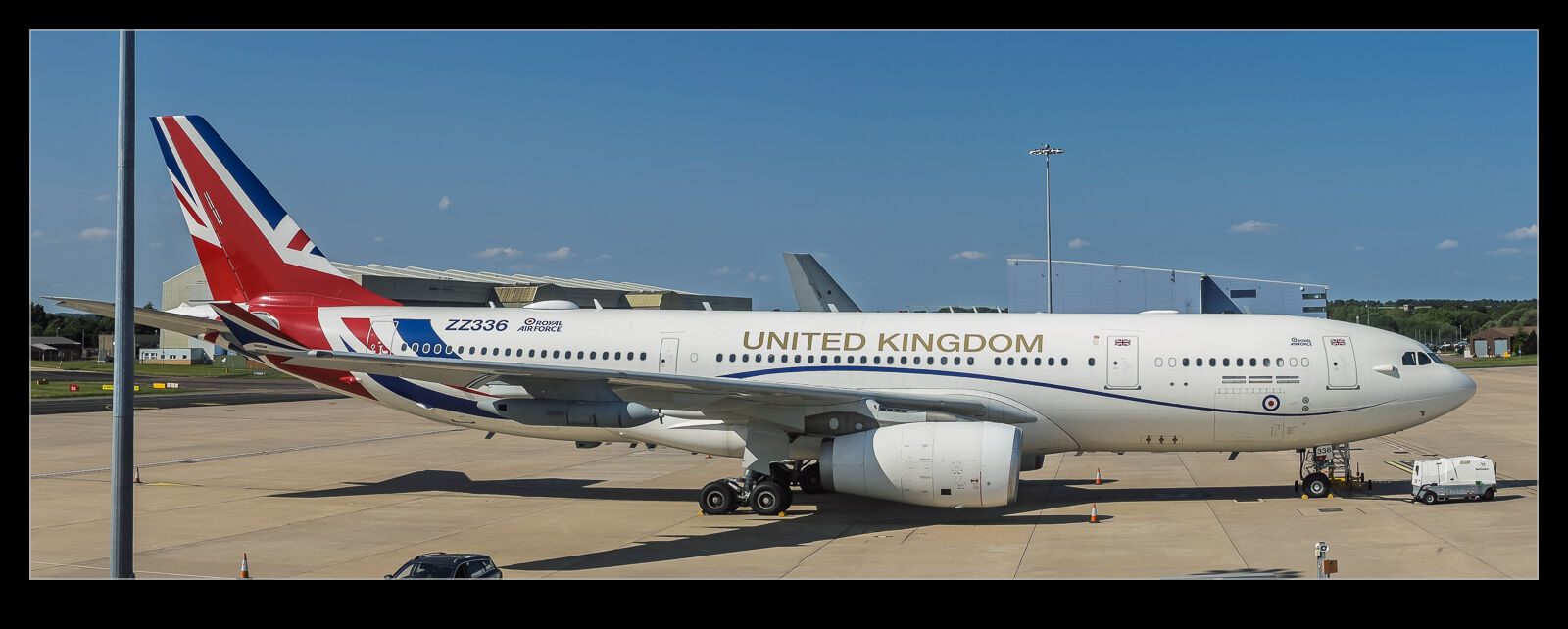 My Voyager ride with 101 Sqn ended back at Brize Norton and we pulled into the line with some other Voyagers. This included Vespina, the jet that is painted in national markings rather than the usual grey. We hung out on the ramp to get a group photo before heading back to the terminal. I got some shots of the Voyagers on the line while I was there (including the jet that we had just been in).
My Voyager ride with 101 Sqn ended back at Brize Norton and we pulled into the line with some other Voyagers. This included Vespina, the jet that is painted in national markings rather than the usual grey. We hung out on the ramp to get a group photo before heading back to the terminal. I got some shots of the Voyagers on the line while I was there (including the jet that we had just been in).
Sensors Versus Markings on the Gripen E
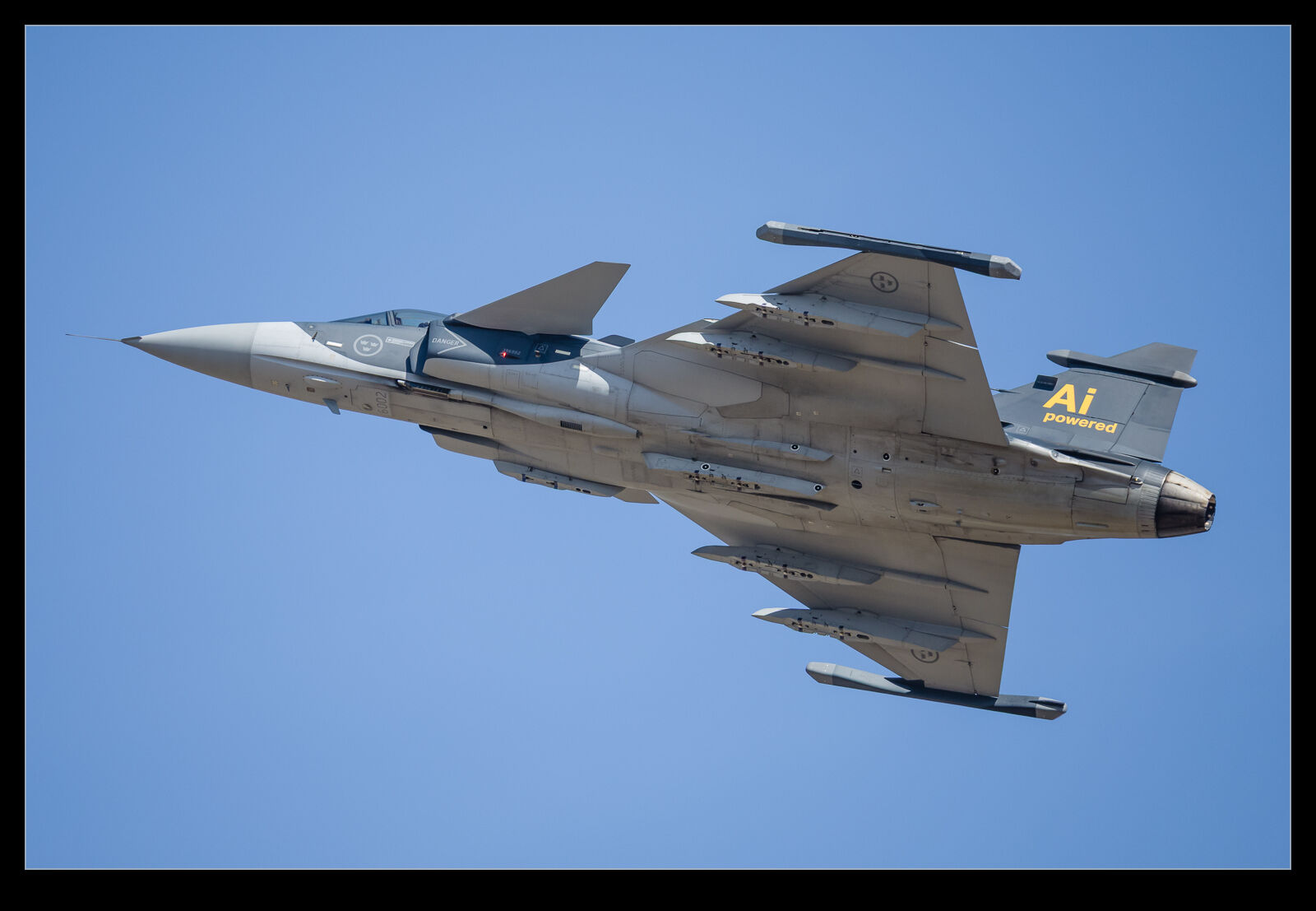 I was editing my images from RIAT recently and culling those that were never going to see the light of day. As I was working through the images of the Gripen E demonstrations, I noticed an array of sensors on the fuselage of the aircraft. There were also a bunch of markings that looked quite similar. The sensors seemed to have a specific shaping to the fuselage to align them with where they needed to face whilst the markings just seemed painted on to both the fuselage and the pylons. My assumption was that these were tracking locations for stores separation tests, but they were different to what I have seen used for this previously. I can’t tell for sure whether one is designed to distract you from the other! I have no knowledge of the systems fitted to the Gripen and will have to do some research but once you see this array of sensors, you can’t help but notice them thereafter!
I was editing my images from RIAT recently and culling those that were never going to see the light of day. As I was working through the images of the Gripen E demonstrations, I noticed an array of sensors on the fuselage of the aircraft. There were also a bunch of markings that looked quite similar. The sensors seemed to have a specific shaping to the fuselage to align them with where they needed to face whilst the markings just seemed painted on to both the fuselage and the pylons. My assumption was that these were tracking locations for stores separation tests, but they were different to what I have seen used for this previously. I can’t tell for sure whether one is designed to distract you from the other! I have no knowledge of the systems fitted to the Gripen and will have to do some research but once you see this array of sensors, you can’t help but notice them thereafter!
Have I Ever Seen a Boomerang?
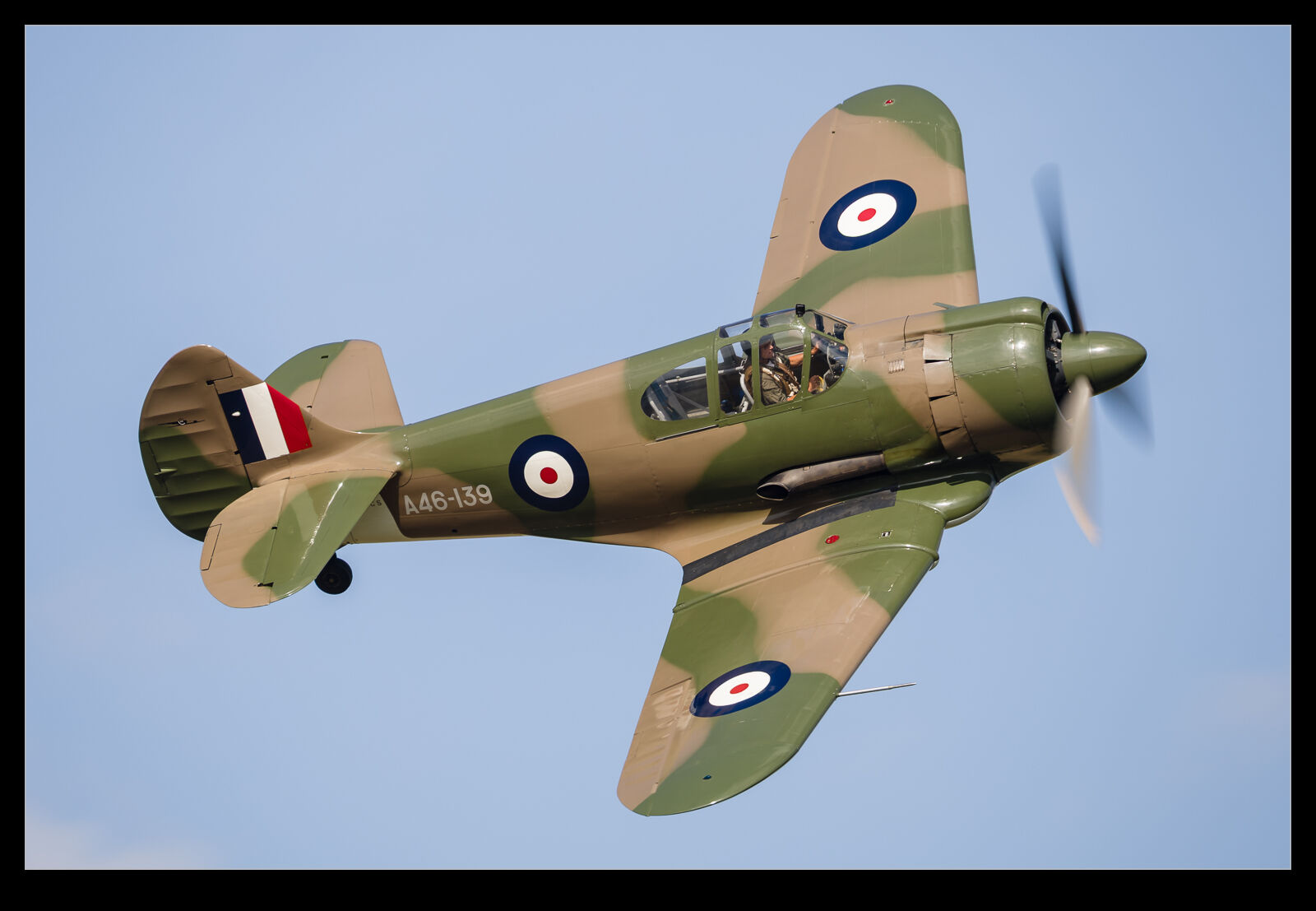 Before you think I am being ridiculous, I am not referring to the profiled wood that will come back to you but the plane. In fact, there is more than one plane called the Boomerang. A Rutan design called the Boomerang was a one off which I once saw on the ground at Oshkosh. However, it was also the name of a piston fighter built in Australia. I had never seen one of those before. If I am being totally honest, I still haven’t since the one I saw was a replica built but it is a pretty impressive replica so we shall let that go.
Before you think I am being ridiculous, I am not referring to the profiled wood that will come back to you but the plane. In fact, there is more than one plane called the Boomerang. A Rutan design called the Boomerang was a one off which I once saw on the ground at Oshkosh. However, it was also the name of a piston fighter built in Australia. I had never seen one of those before. If I am being totally honest, I still haven’t since the one I saw was a replica built but it is a pretty impressive replica so we shall let that go.
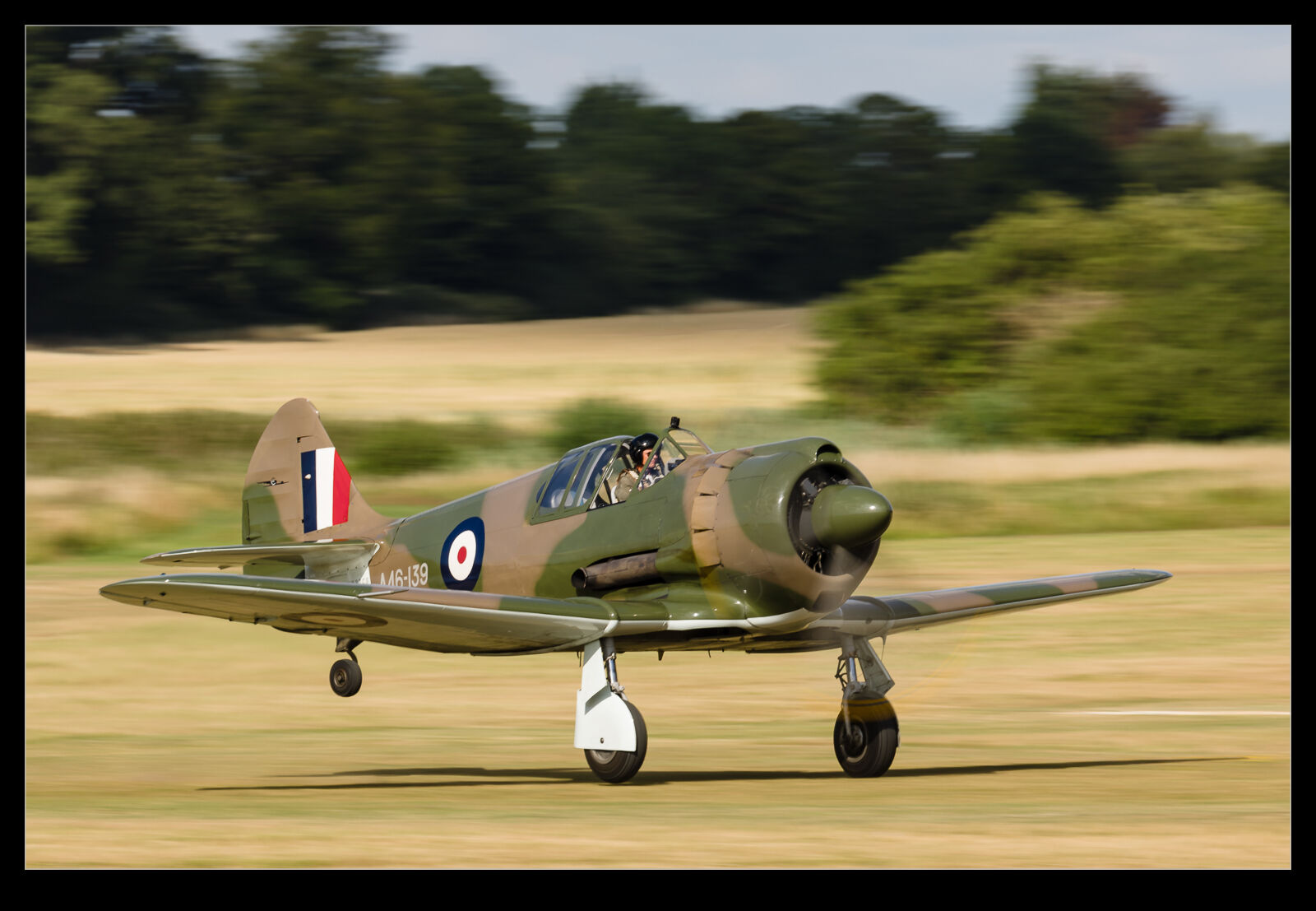 It was brought to the Festival of Flight that was held by the Shuttleworth Trust at Old Warden in the summer. Having an old type with an unfamiliar shape when you can get blasé about the various Spitfires, Hurricanes, Mustangs etc. is a nice change. It had a great paint job, and the tighter confines of Old Warden allowed it to be displayed nice and close to the crowd line. Certainly, one of the more notable things I got to shoot this year.
It was brought to the Festival of Flight that was held by the Shuttleworth Trust at Old Warden in the summer. Having an old type with an unfamiliar shape when you can get blasé about the various Spitfires, Hurricanes, Mustangs etc. is a nice change. It had a great paint job, and the tighter confines of Old Warden allowed it to be displayed nice and close to the crowd line. Certainly, one of the more notable things I got to shoot this year.
Portugal’s Merlins Just Look Better
 The AW101 is a great looking helicopter. I saw the original prototypes fly in the late ‘80s and early ‘90s including one that was configured as a civilian passenger type (sadly never to have the demand to make it to production). Since that time, I have liked to get photos of them wherever possible. The Canadian Cormorants look great in their yellow paint, and I finally got shots of them last year. Normally they are not painted in a very exciting way.
The AW101 is a great looking helicopter. I saw the original prototypes fly in the late ‘80s and early ‘90s including one that was configured as a civilian passenger type (sadly never to have the demand to make it to production). Since that time, I have liked to get photos of them wherever possible. The Canadian Cormorants look great in their yellow paint, and I finally got shots of them last year. Normally they are not painted in a very exciting way.
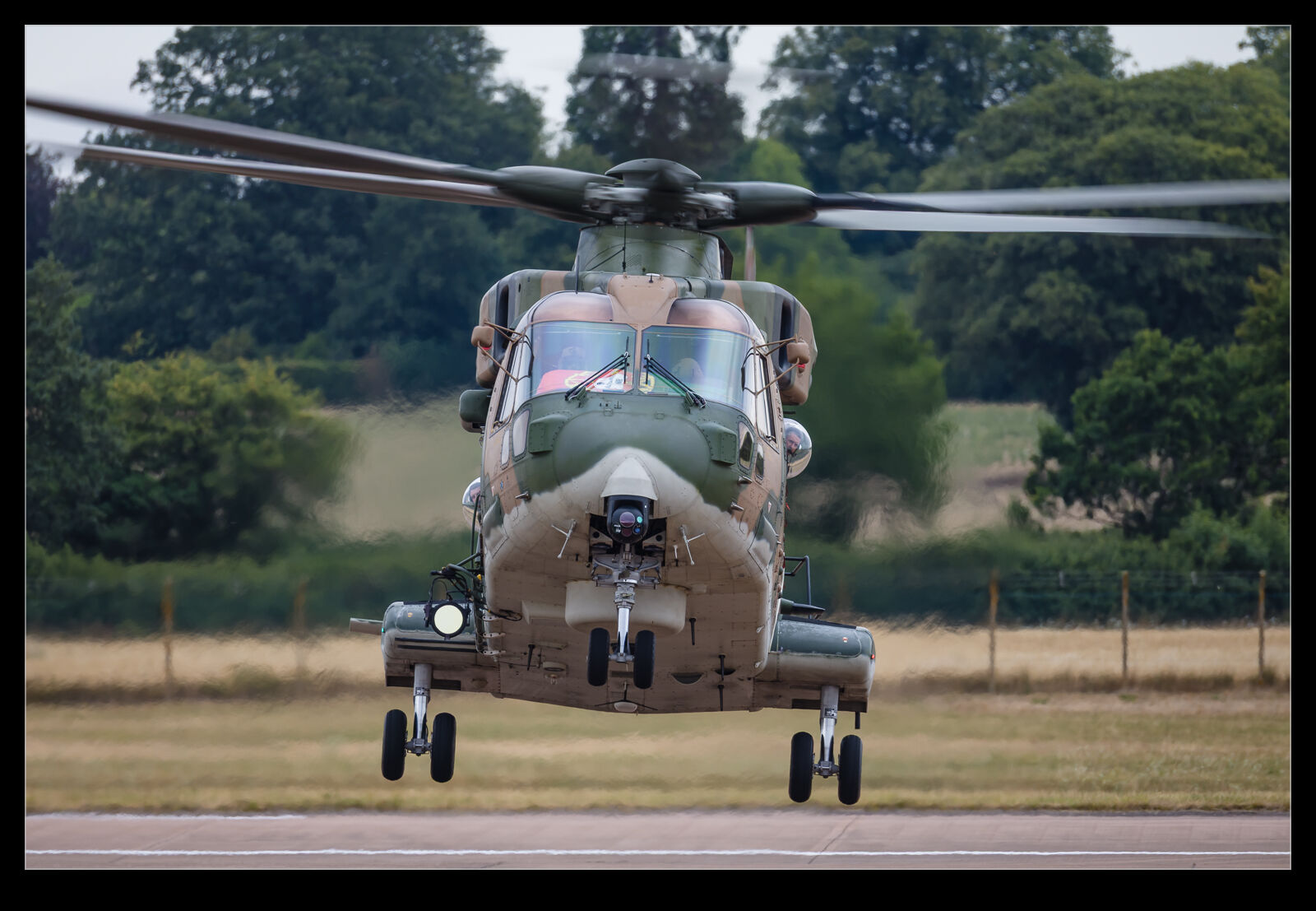 However, the Portuguese Merlin came to display at RIAT this year and it was way better looking than the average. It has a camouflage finish which seems to be a rarity these days. The colours of the camo were also quite vibrant, and it made for a striking subject. It certainly helped that the crew were throwing it around quite energetically and performed on more than one occasion, so I got plenty of shots of it.
However, the Portuguese Merlin came to display at RIAT this year and it was way better looking than the average. It has a camouflage finish which seems to be a rarity these days. The colours of the camo were also quite vibrant, and it made for a striking subject. It certainly helped that the crew were throwing it around quite energetically and performed on more than one occasion, so I got plenty of shots of it.
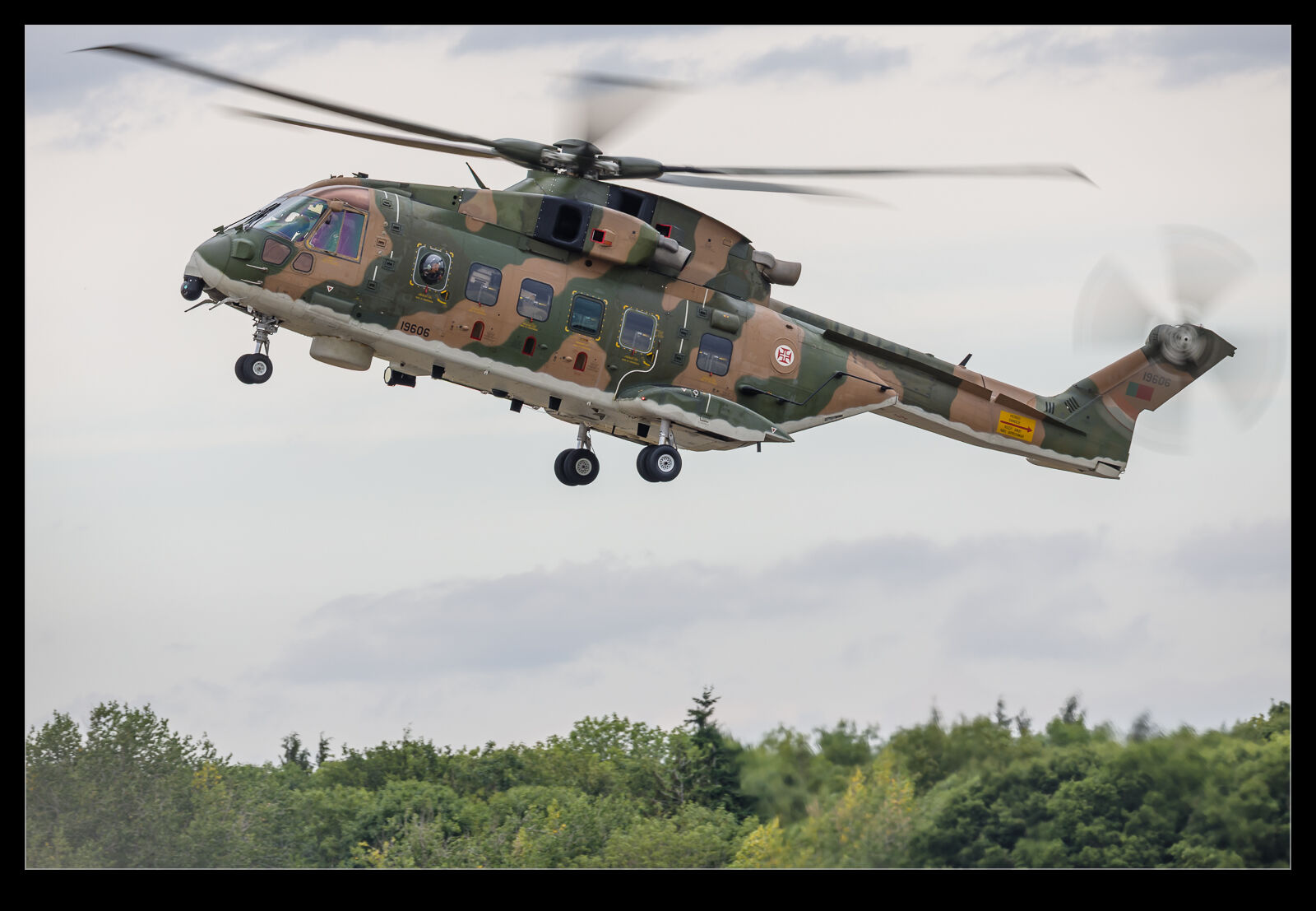 An air show is an opportunity to see an airframe performing in ways that you wouldn’t normally get but it is also a rather sterile environment. These helicopters are used for search and rescue along the coastline of Portugal, and I imagine it would be really nice to get to photograph them in their “natural habitat” with cliffs and the see behind them. Maybe I might find myself out there one day.
An air show is an opportunity to see an airframe performing in ways that you wouldn’t normally get but it is also a rather sterile environment. These helicopters are used for search and rescue along the coastline of Portugal, and I imagine it would be really nice to get to photograph them in their “natural habitat” with cliffs and the see behind them. Maybe I might find myself out there one day.
Taking a Chance With the T-38 Landing
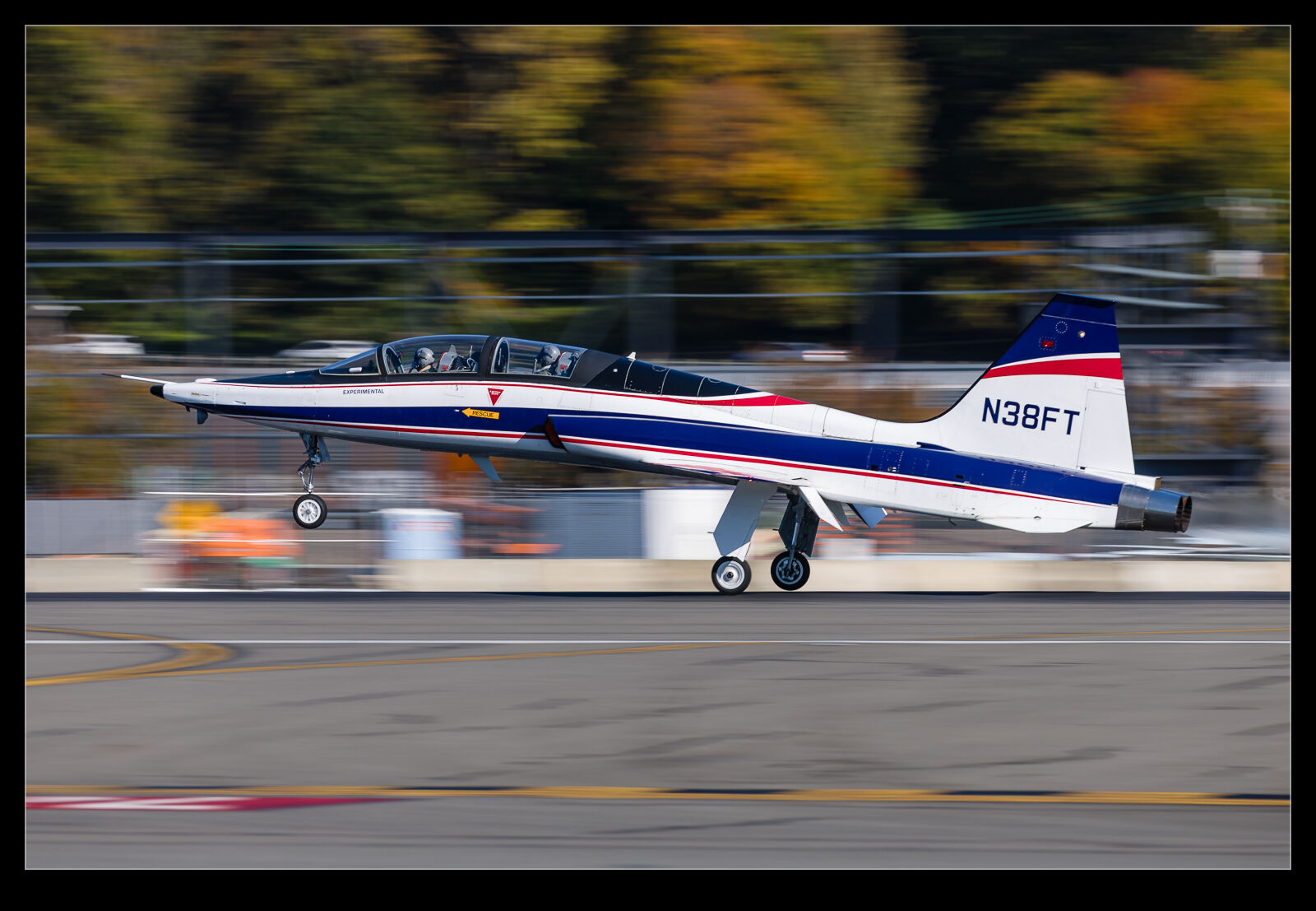 The T-38 chase planes that Boeing operates from Boeing Field did not fly as often as I would have liked. I’m sure they got plenty of use out of them, but it seemed to be a lucky break if one was up – particularly if I was in any place to see them. Consequently, I was always wondering whether I should make sure to get a sharp shot or take a chance on getting a more interesting look to the image. On this occasion, I decided to go with the latter. I dropped the shutter speed down to 1/100th of a second and hoped. A few came out okay. The cluttered background at Boeing Field is always a problem so a bit of blur helps put the focus on the plane.
The T-38 chase planes that Boeing operates from Boeing Field did not fly as often as I would have liked. I’m sure they got plenty of use out of them, but it seemed to be a lucky break if one was up – particularly if I was in any place to see them. Consequently, I was always wondering whether I should make sure to get a sharp shot or take a chance on getting a more interesting look to the image. On this occasion, I decided to go with the latter. I dropped the shutter speed down to 1/100th of a second and hoped. A few came out okay. The cluttered background at Boeing Field is always a problem so a bit of blur helps put the focus on the plane.
Super Bugs at Bremerton
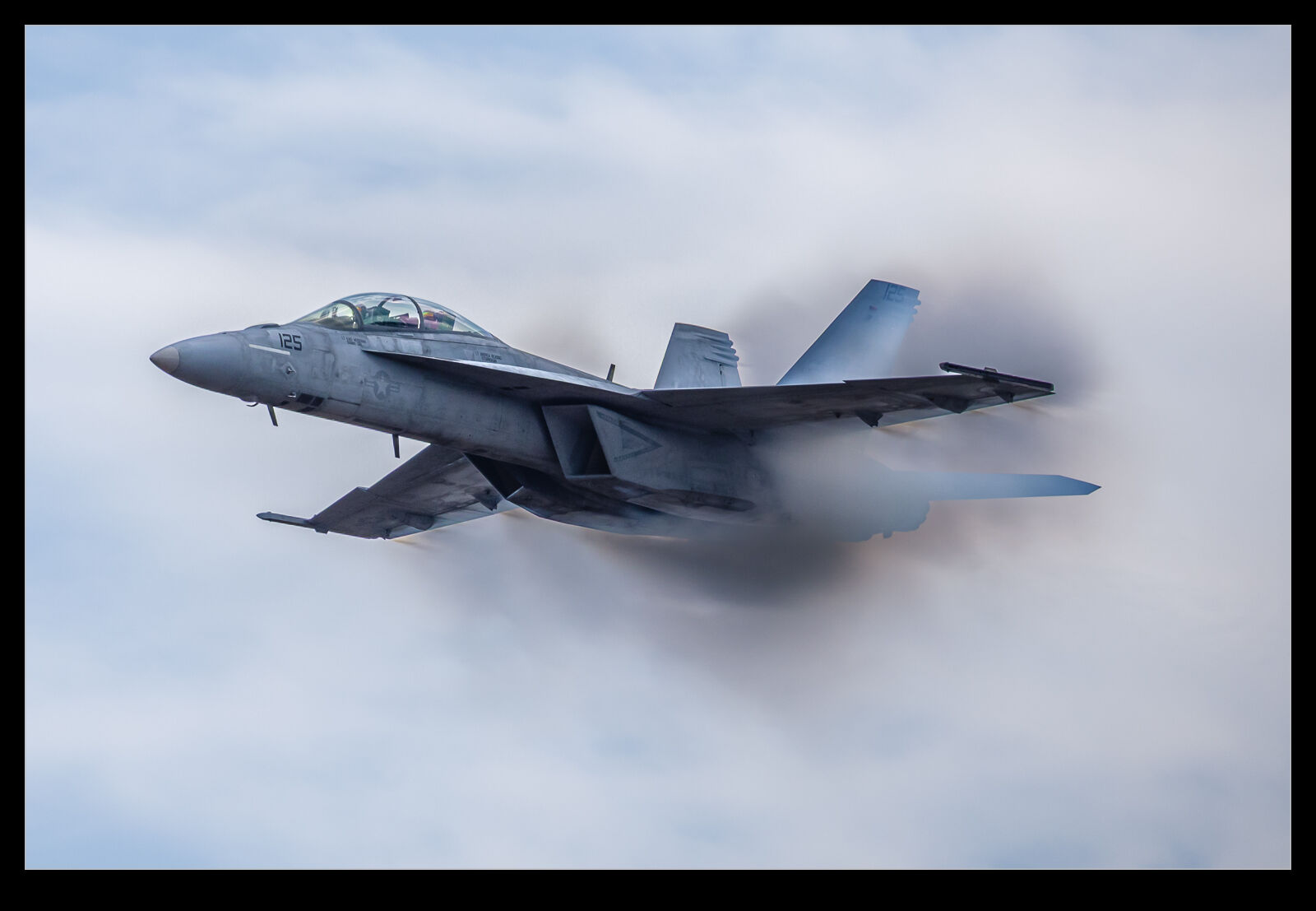 One of the last air shows I attended before we left the Pacific Northwest was at Bremerton. The unusual thing about this air show was that I didn’t head there alone. Instead, Nancy came along with me. It is a long time since she last came to a show with me, but the good news was that she enjoyed it! One of the parts of the show that she found the best was the US Navy’s Super Hornet display. They ripped up the sky for a while. Their blast across the field from crowd rear particularly amused her!
One of the last air shows I attended before we left the Pacific Northwest was at Bremerton. The unusual thing about this air show was that I didn’t head there alone. Instead, Nancy came along with me. It is a long time since she last came to a show with me, but the good news was that she enjoyed it! One of the parts of the show that she found the best was the US Navy’s Super Hornet display. They ripped up the sky for a while. Their blast across the field from crowd rear particularly amused her!
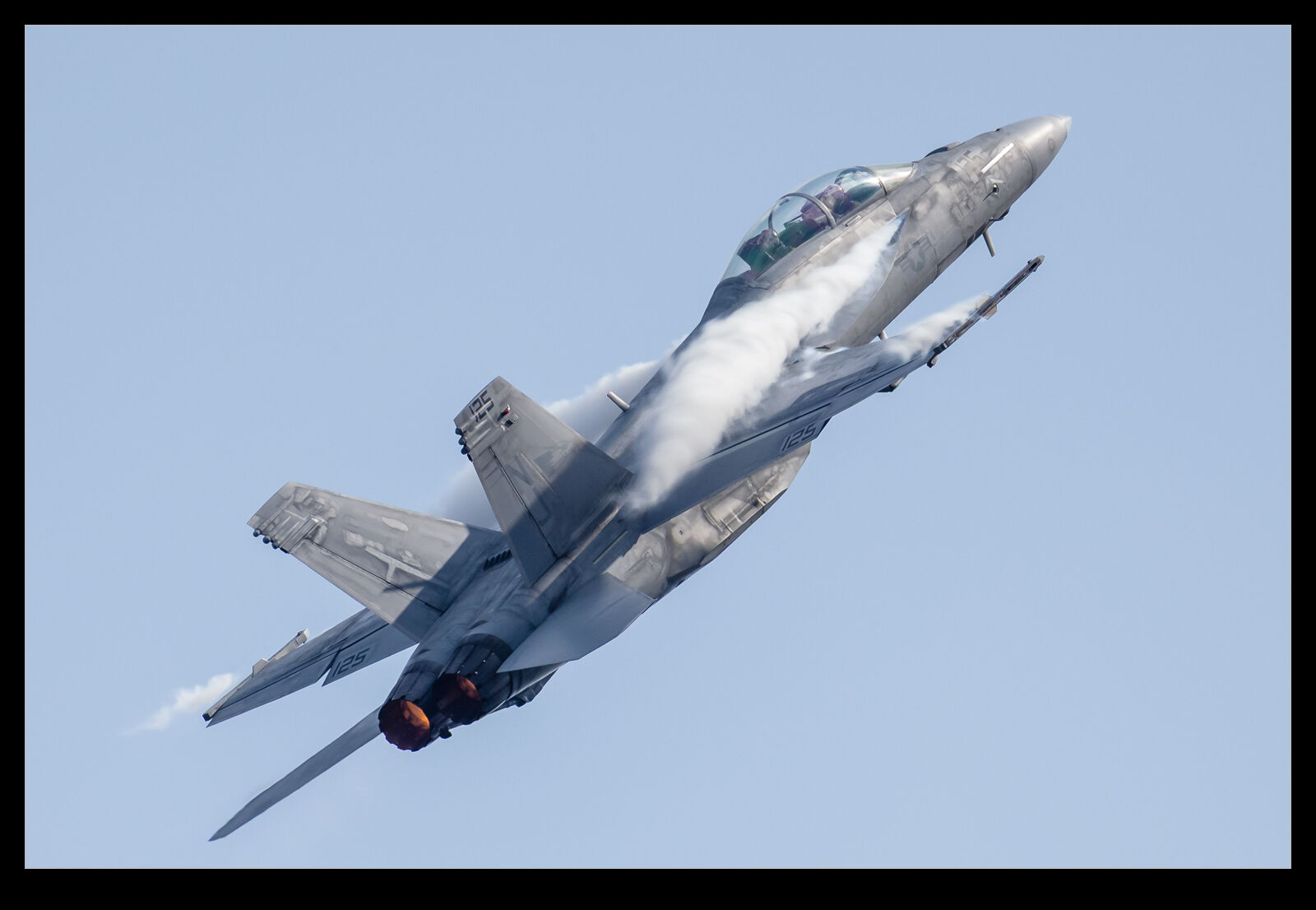 The conditions not ideal from a lighting point of view but there was humidity in the air with the upside that the jet was created plenty of spluff. One of the passes in particular created a lot of cloud activity. It made for a difficult image to process given the contrast with the cloudy background and that its own clouds needed not to be over exposed. I suspect I shall probably try reprocessing this again in the future as either my techniques improve, or the software gets more advanced. I did have a bit too much lens for the closest part of the pass – oh well…
The conditions not ideal from a lighting point of view but there was humidity in the air with the upside that the jet was created plenty of spluff. One of the passes in particular created a lot of cloud activity. It made for a difficult image to process given the contrast with the cloudy background and that its own clouds needed not to be over exposed. I suspect I shall probably try reprocessing this again in the future as either my techniques improve, or the software gets more advanced. I did have a bit too much lens for the closest part of the pass – oh well…
The History of Harriers in One Place
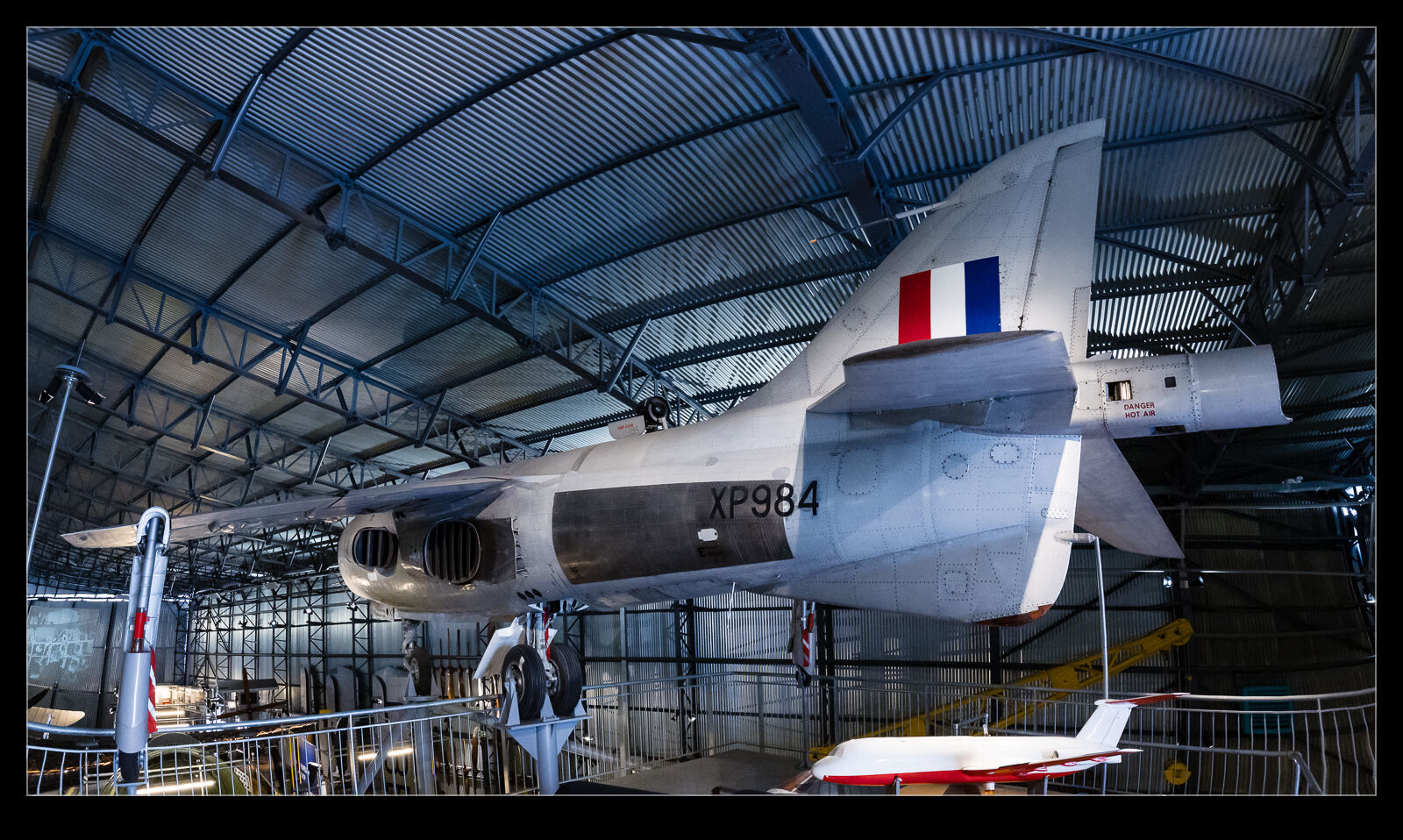 The Brooklands Museum might be located in the home of Vickers and include a lot of Vickers exhibits, but it also has some Hawker products too. I might be slightly exaggerating about the full history of Harriers, but they have three different examples of the Harrier lineage on display. The first is actually a Harrier but a P1127. The original demonstrator that led to the Kestrel and ultimately the Harrier. The design philosophy is clearly the same, but this was the beginning of the journey for the Kingston design team.
The Brooklands Museum might be located in the home of Vickers and include a lot of Vickers exhibits, but it also has some Hawker products too. I might be slightly exaggerating about the full history of Harriers, but they have three different examples of the Harrier lineage on display. The first is actually a Harrier but a P1127. The original demonstrator that led to the Kestrel and ultimately the Harrier. The design philosophy is clearly the same, but this was the beginning of the journey for the Kingston design team.
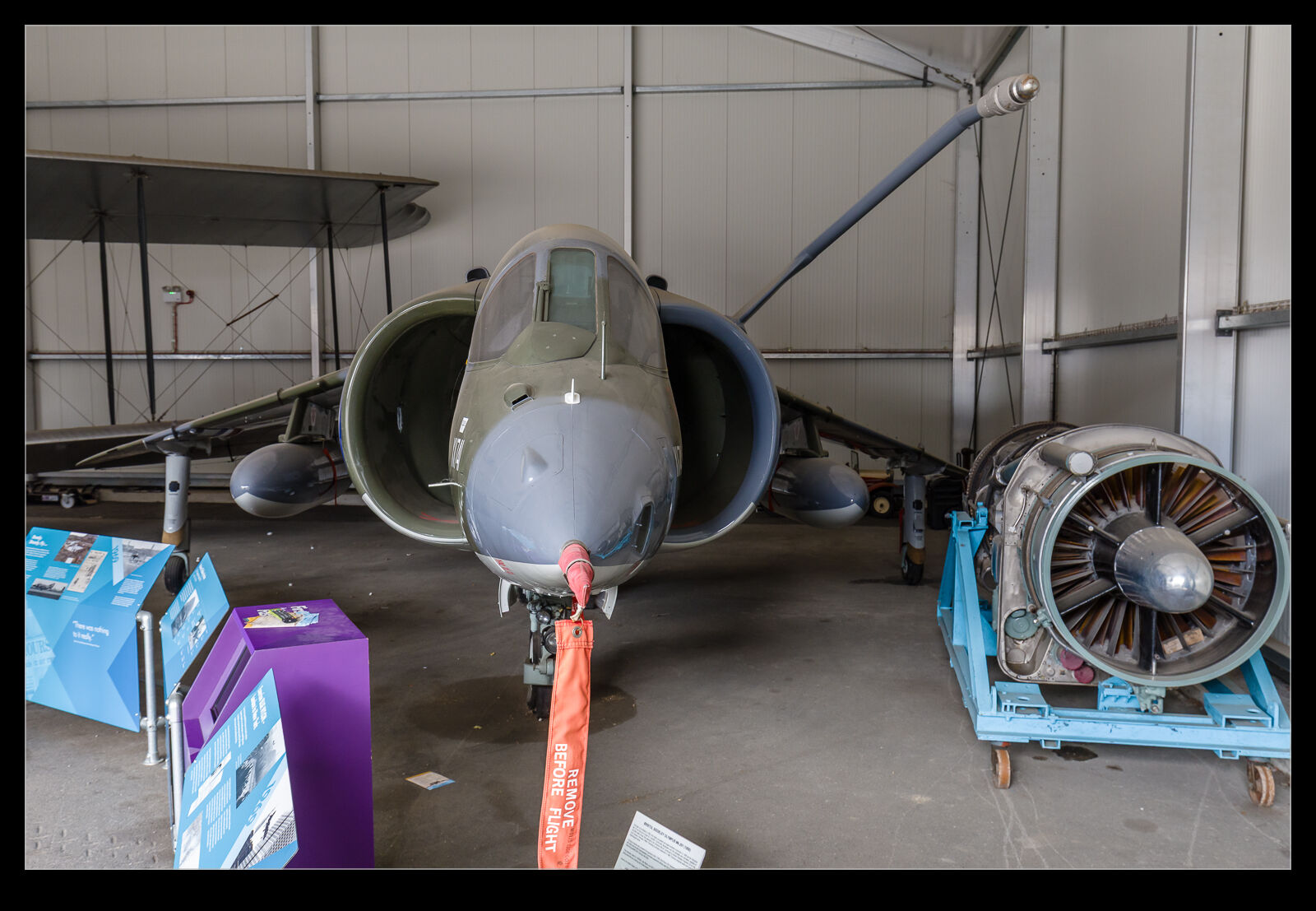 Then there is a Harrier GR1. Unusually it is fitted with the extended wingtips which provided a little extra fuel and a slight reduction in drag. The reason the plane is fitted with them is that it is one of the airframes that took place in the Transatlantic Air Race and won. It is surrounded by some displays of the race and the competitors it defeated – most importantly the Royal Navy!
Then there is a Harrier GR1. Unusually it is fitted with the extended wingtips which provided a little extra fuel and a slight reduction in drag. The reason the plane is fitted with them is that it is one of the airframes that took place in the Transatlantic Air Race and won. It is surrounded by some displays of the race and the competitors it defeated – most importantly the Royal Navy!
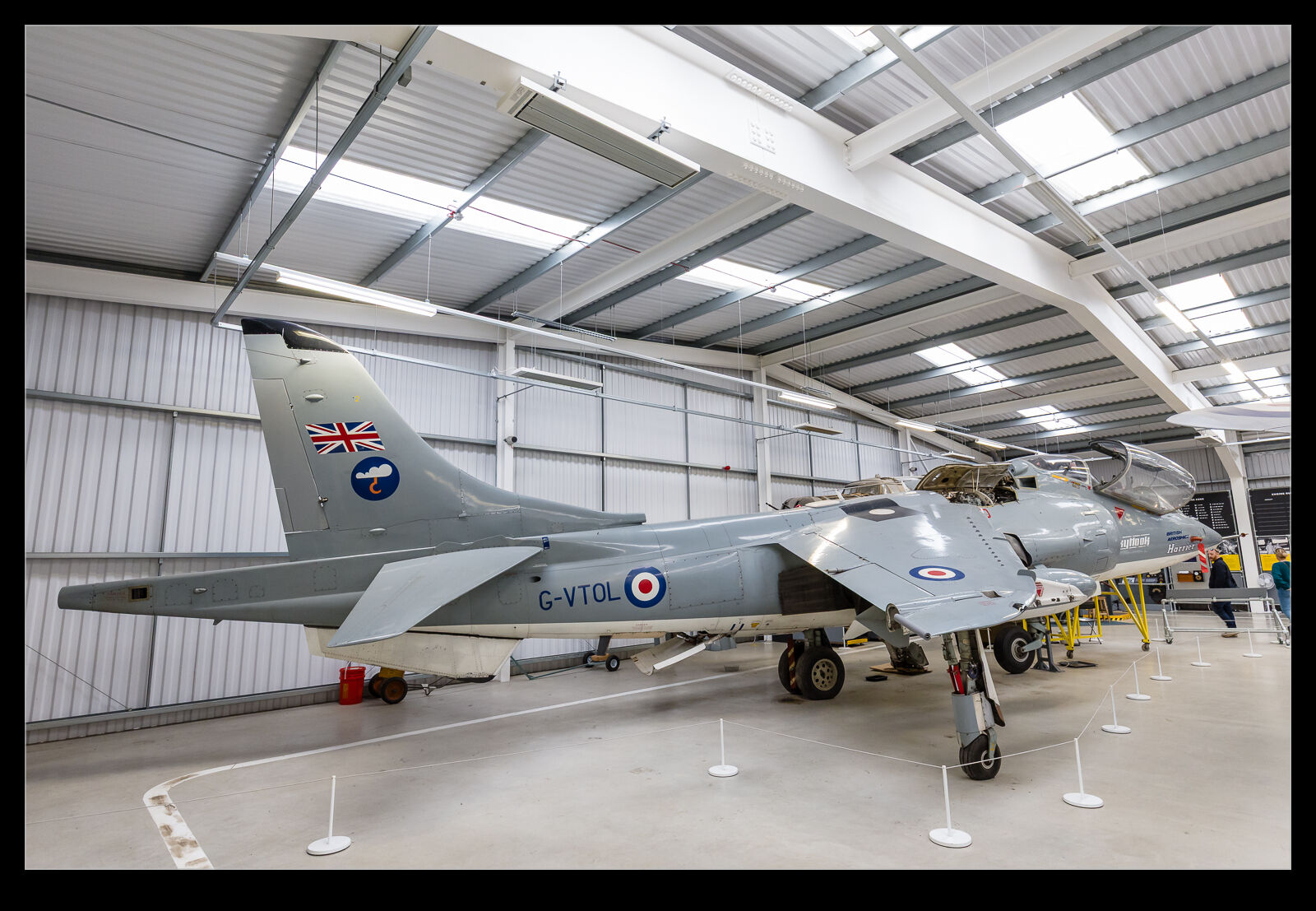 Last but by no means least is a two-seater, G-VTOL/ZA250. This was a company funded demonstrator and was a regular sight at air shows throughout the 80s. It undertook sales campaigns with various countries and undertook trials of things like the ski jump take off and the Skyhook concept. It seemed to be in a different paint scheme every time I ever saw it on TV. Sure, no Sea Harrier or Harrier II but this is quite a collection to have in one place.
Last but by no means least is a two-seater, G-VTOL/ZA250. This was a company funded demonstrator and was a regular sight at air shows throughout the 80s. It undertook sales campaigns with various countries and undertook trials of things like the ski jump take off and the Skyhook concept. It seemed to be in a different paint scheme every time I ever saw it on TV. Sure, no Sea Harrier or Harrier II but this is quite a collection to have in one place.
